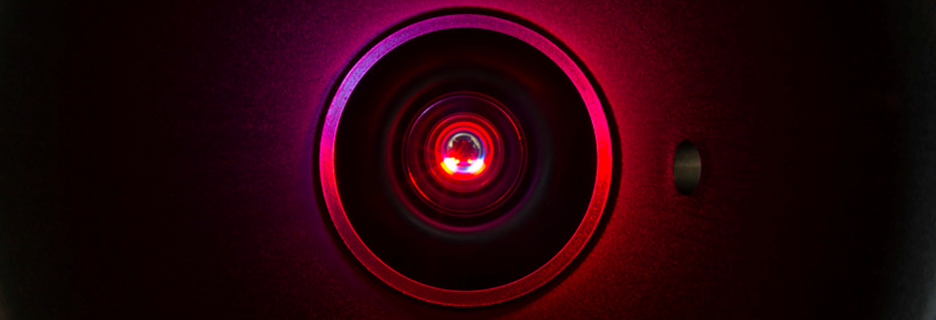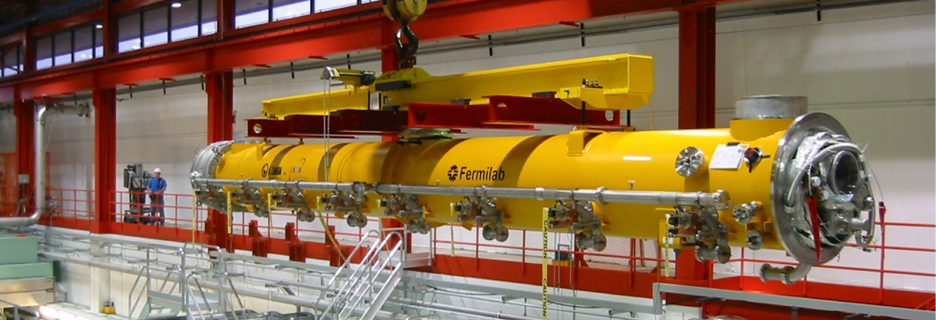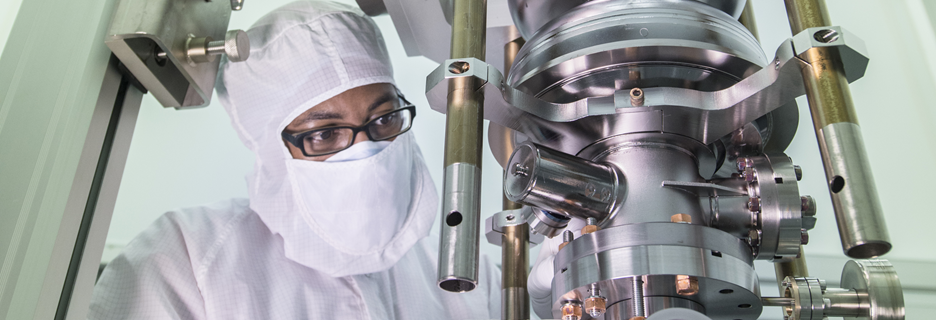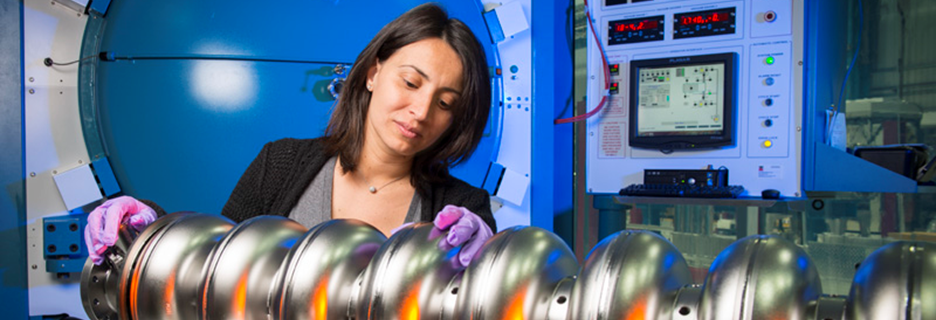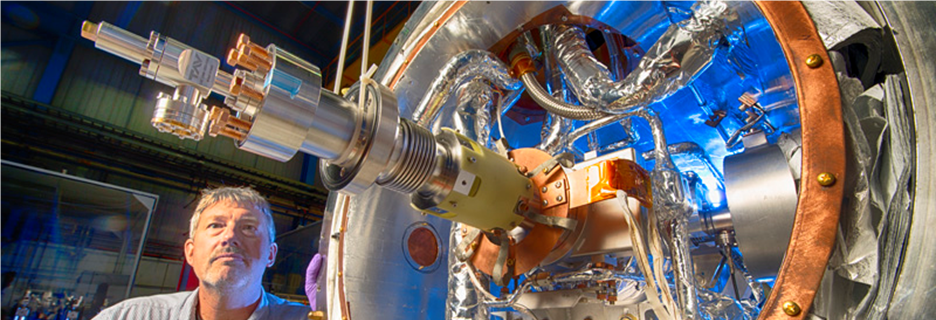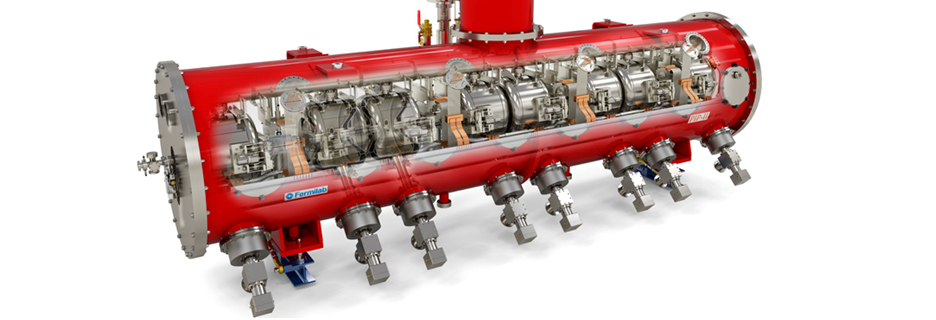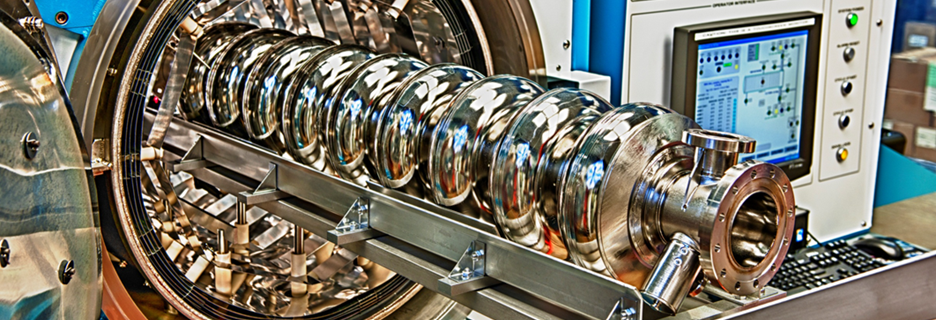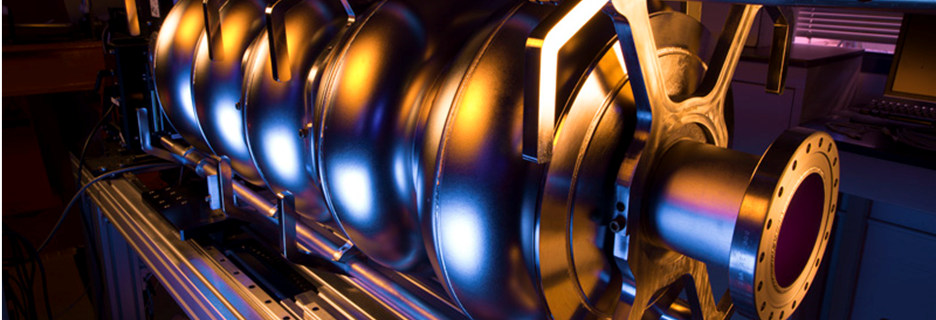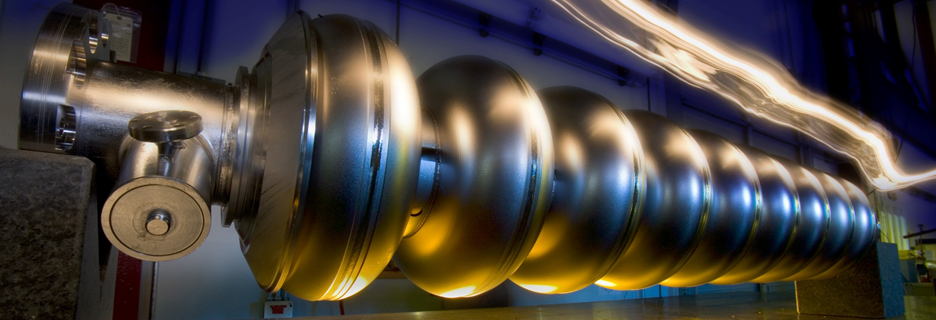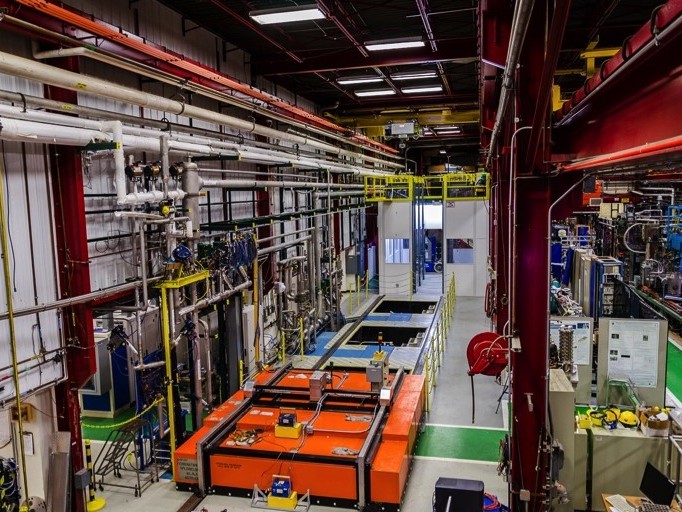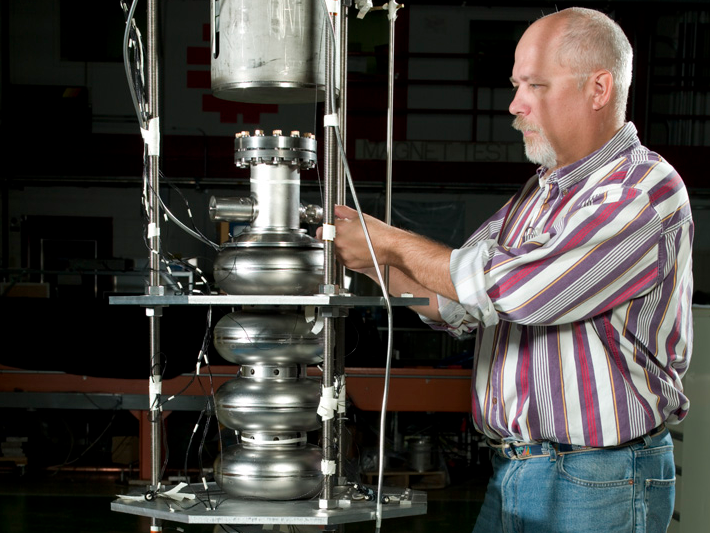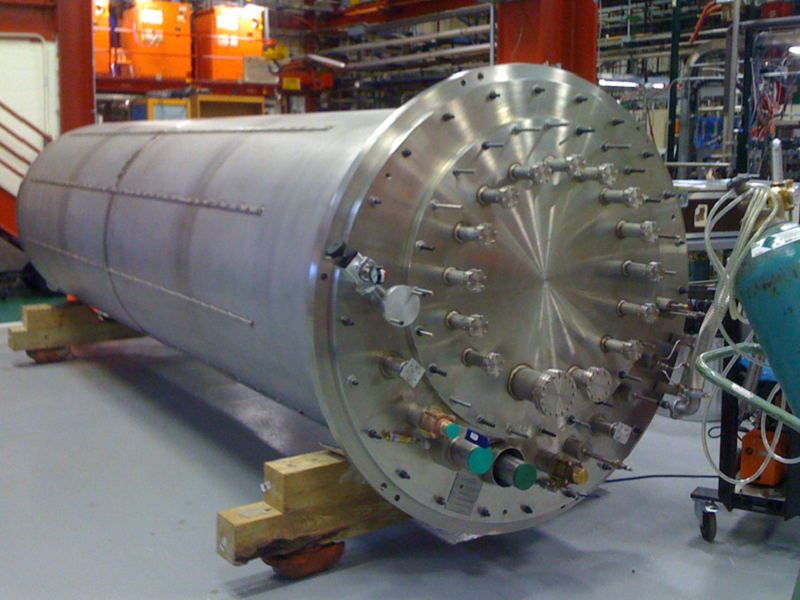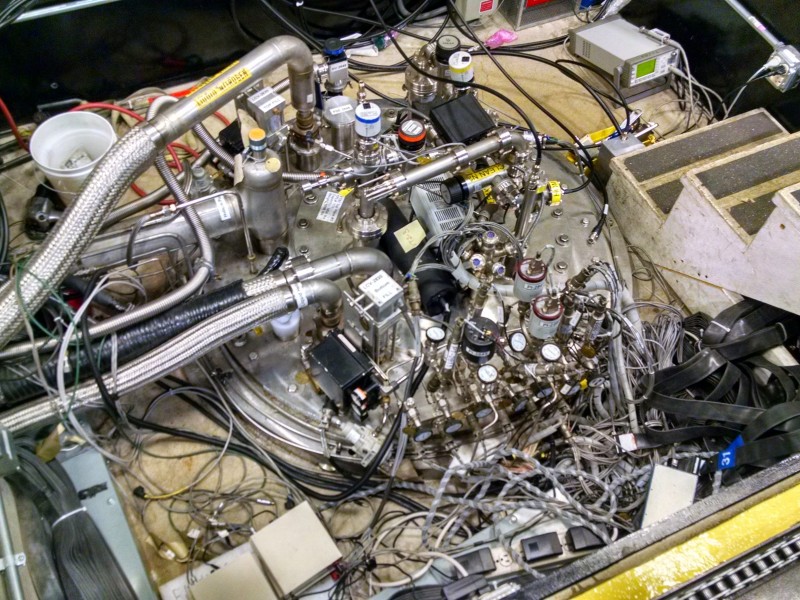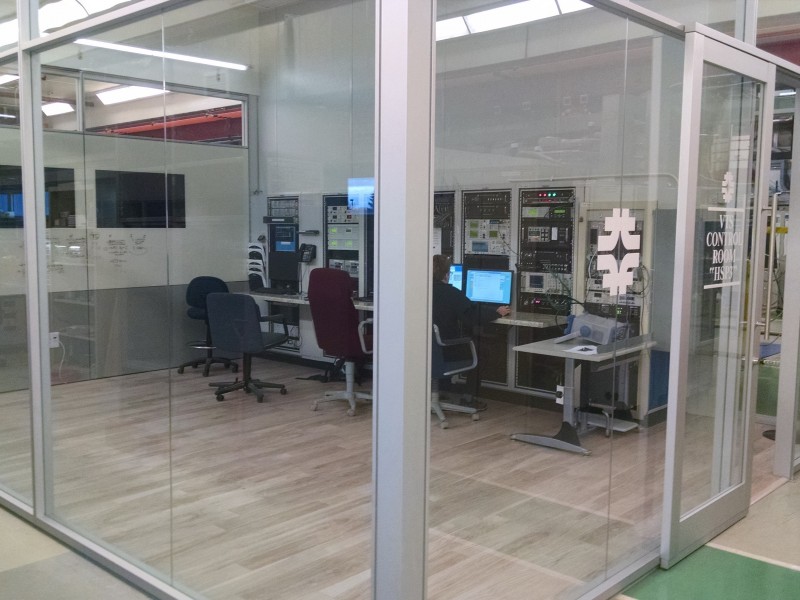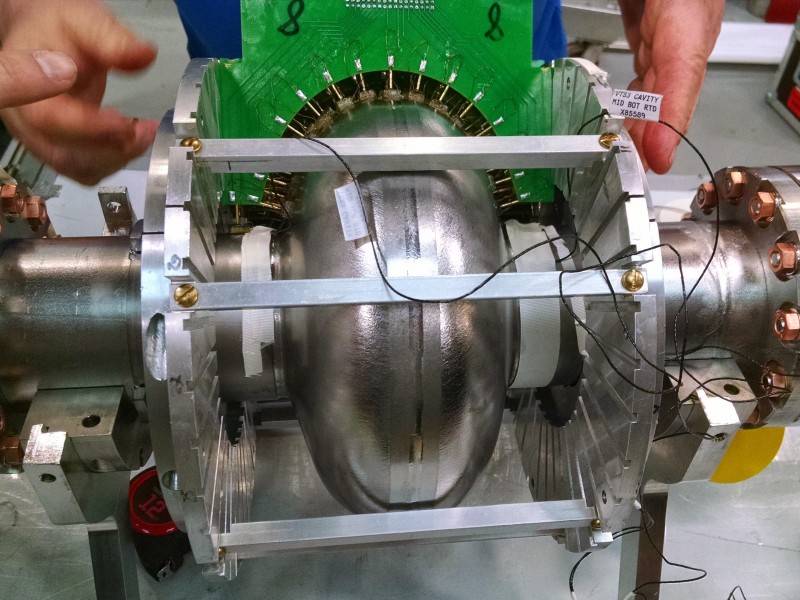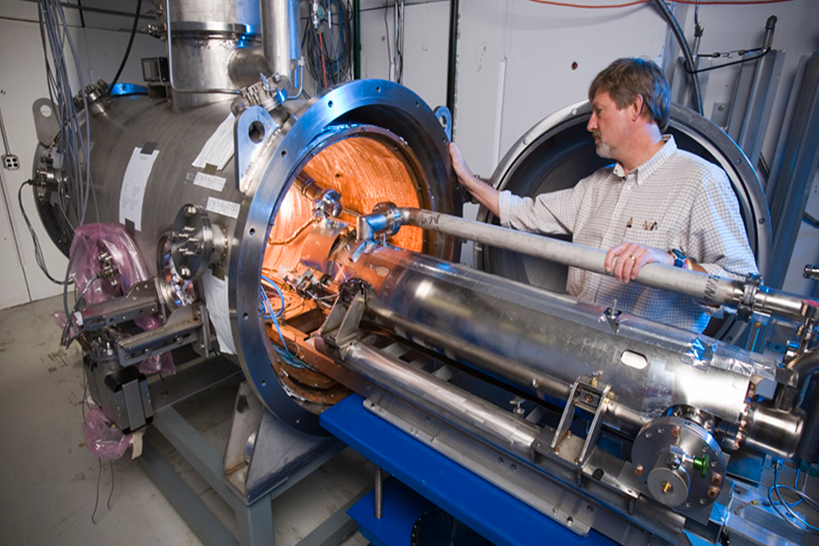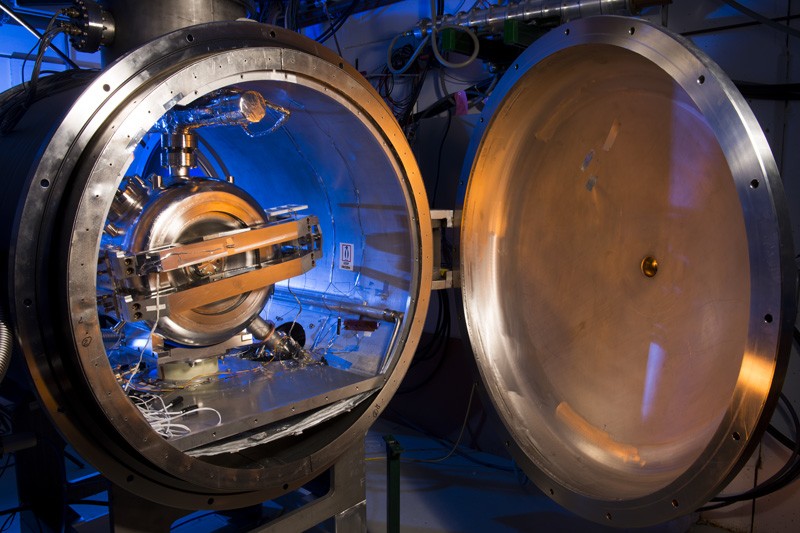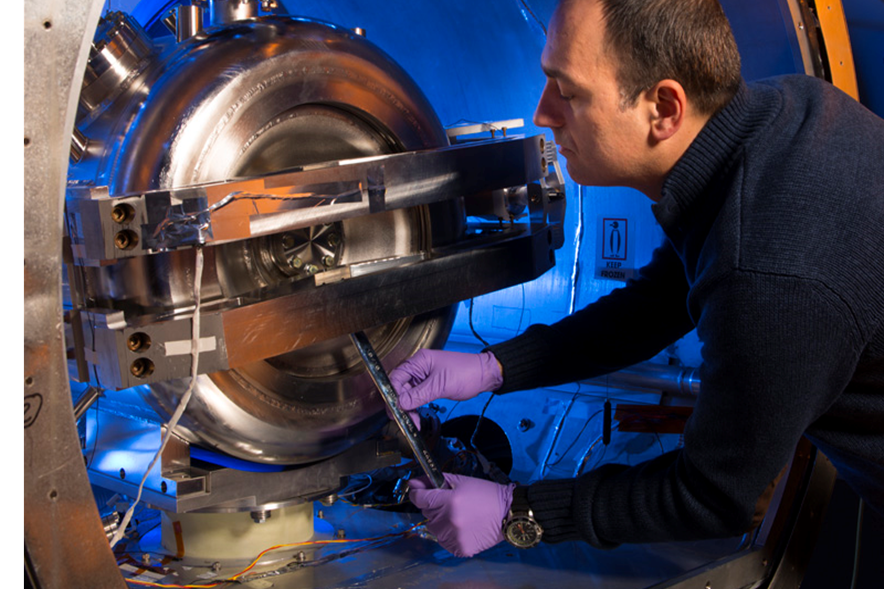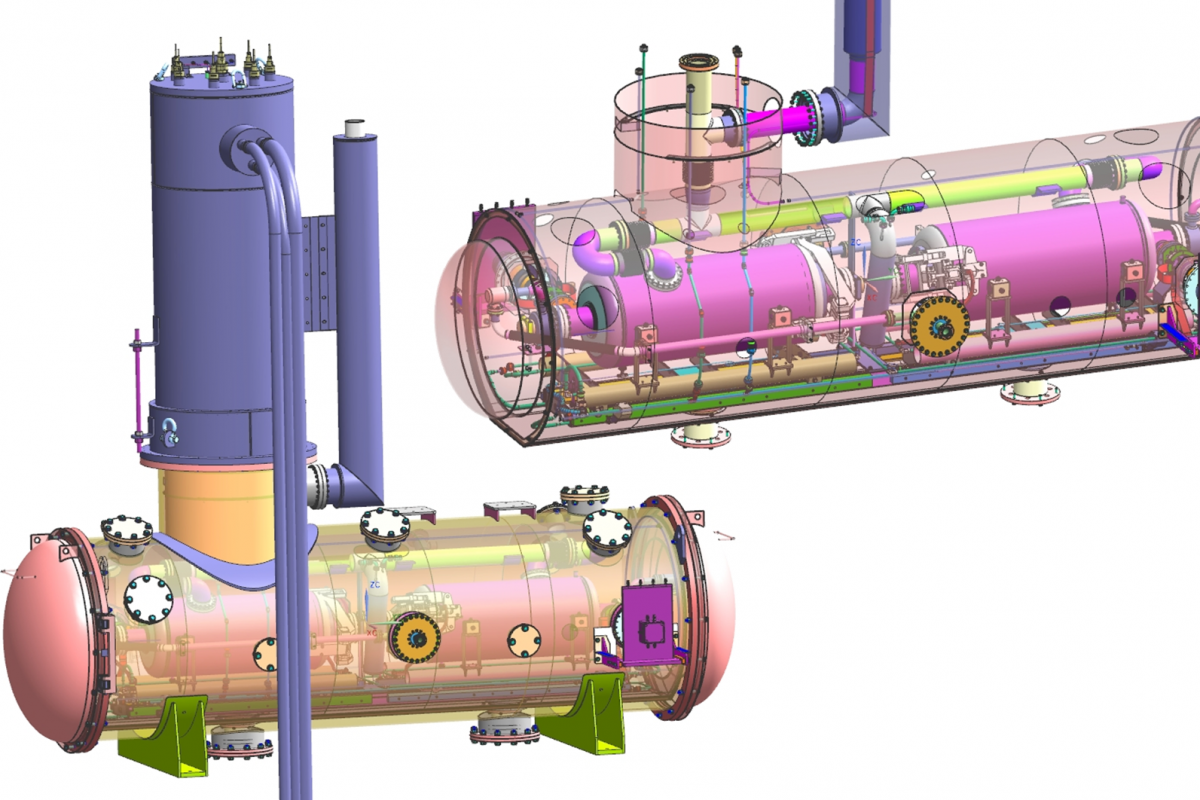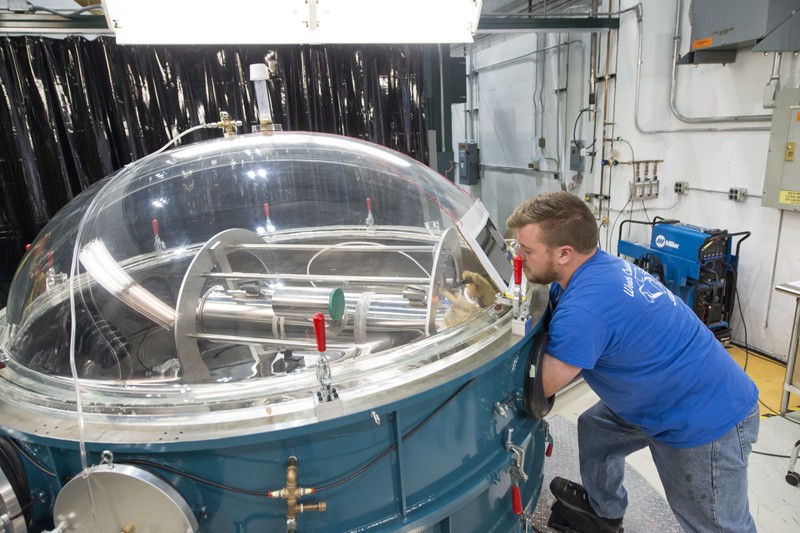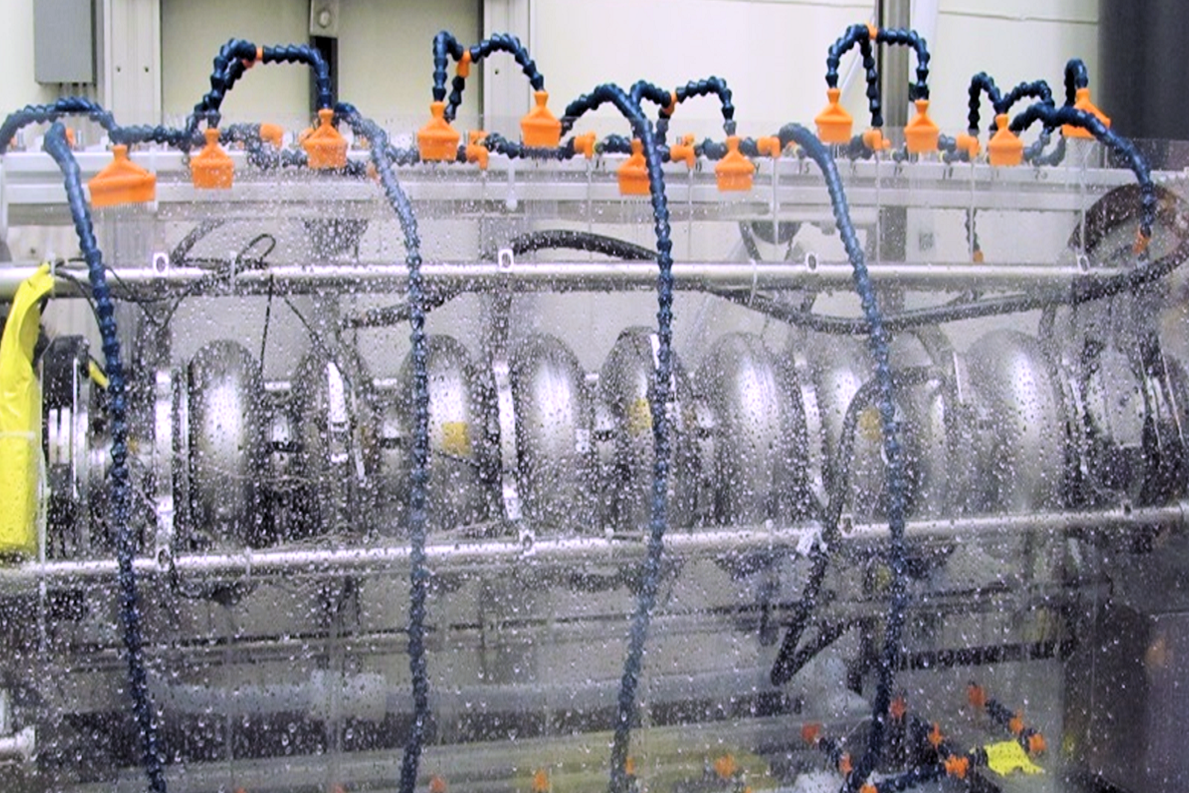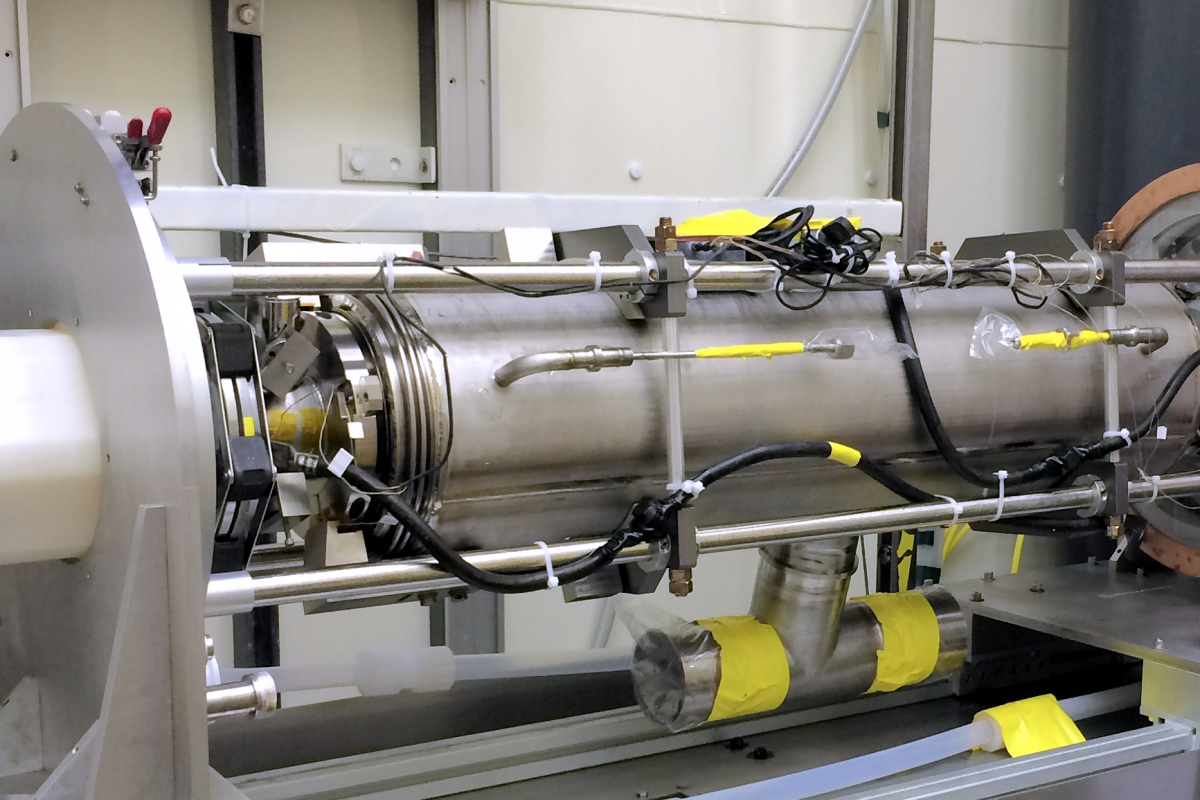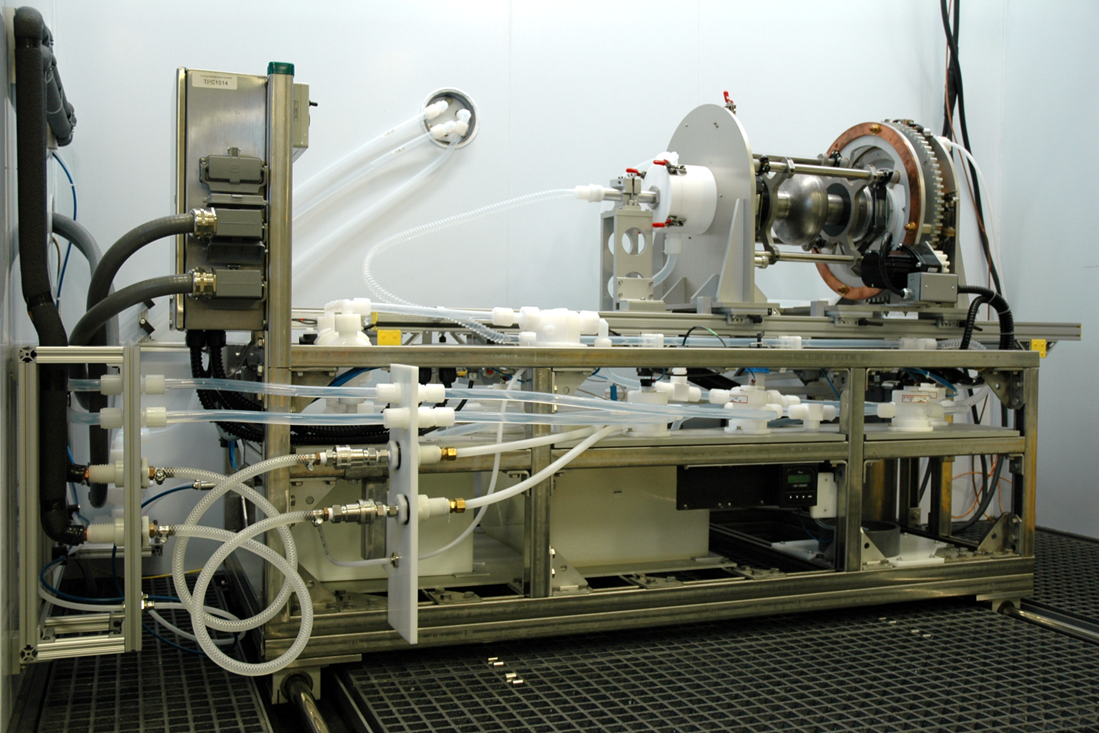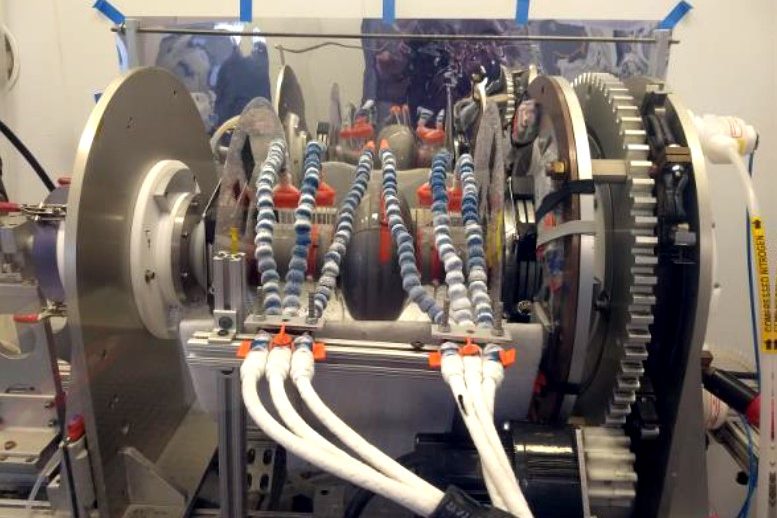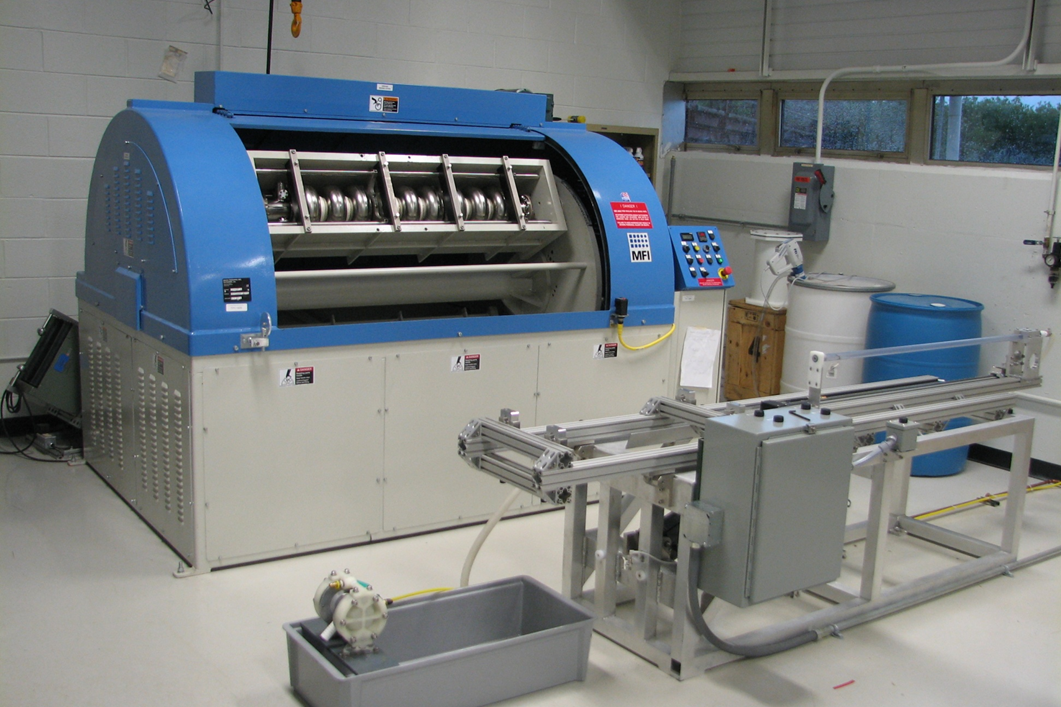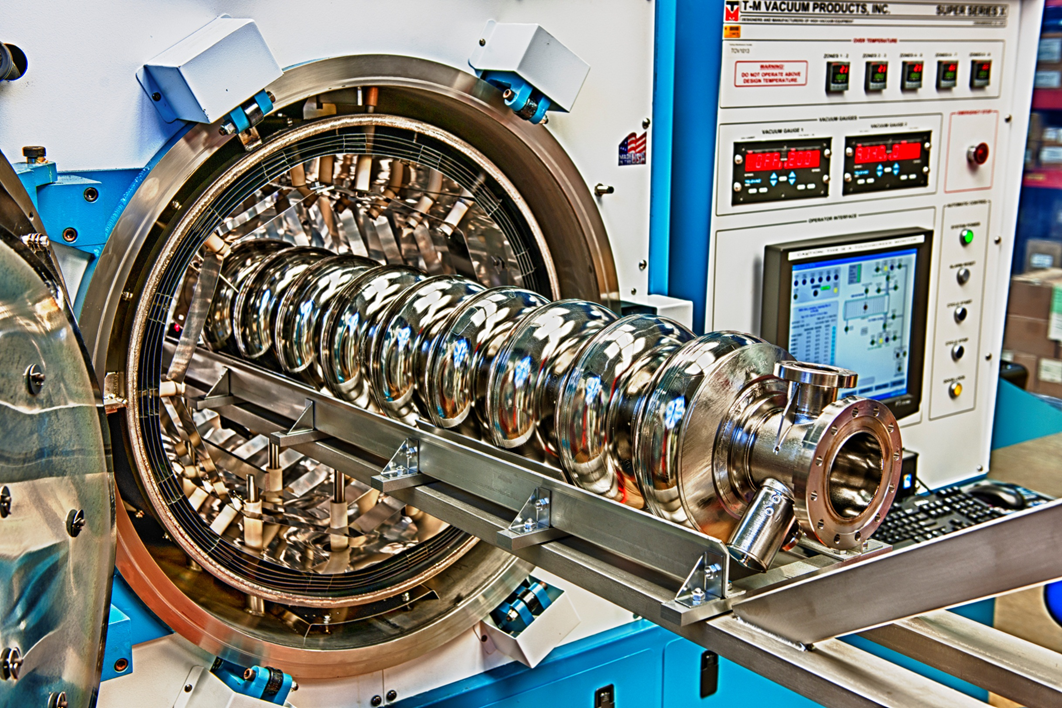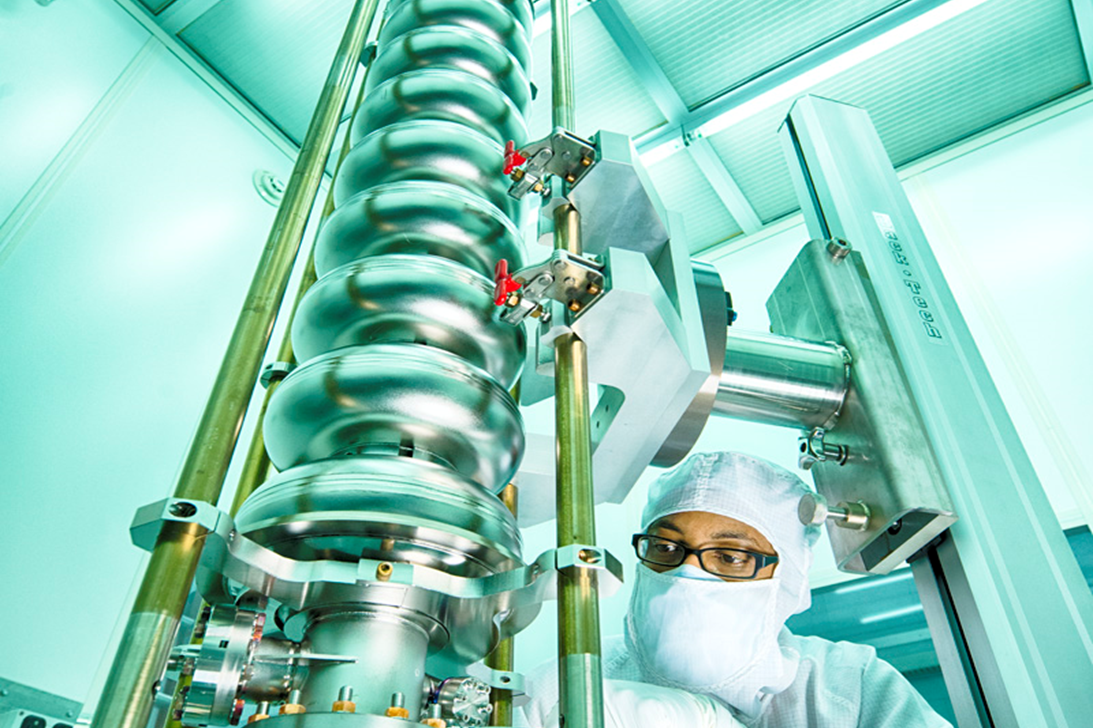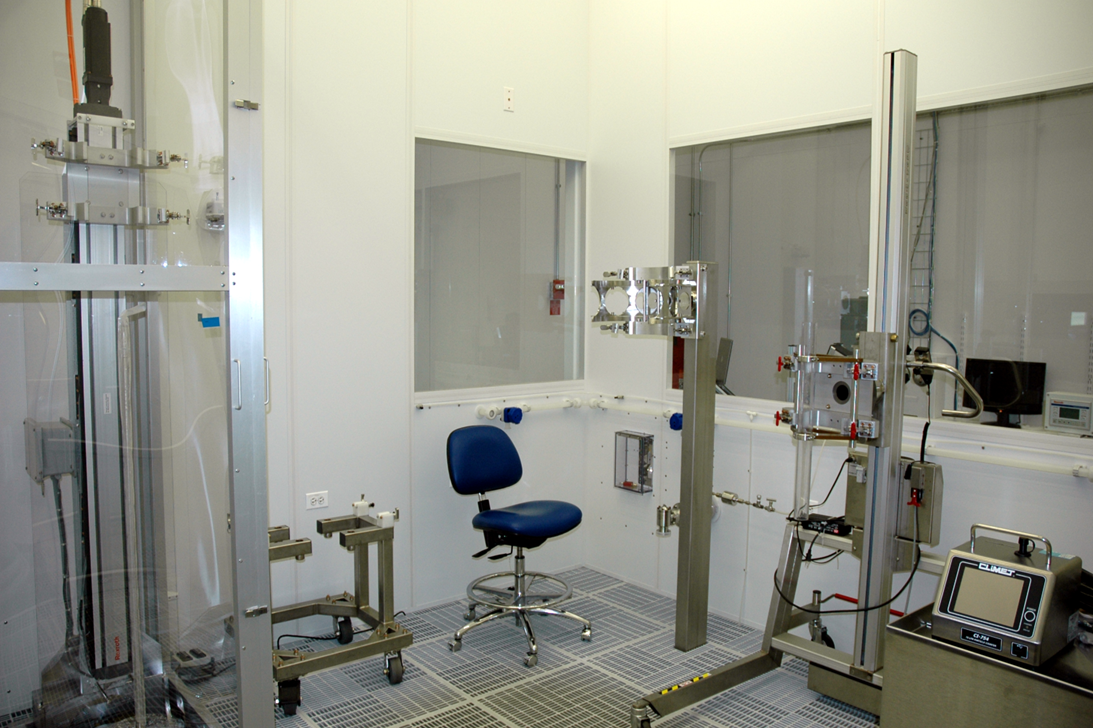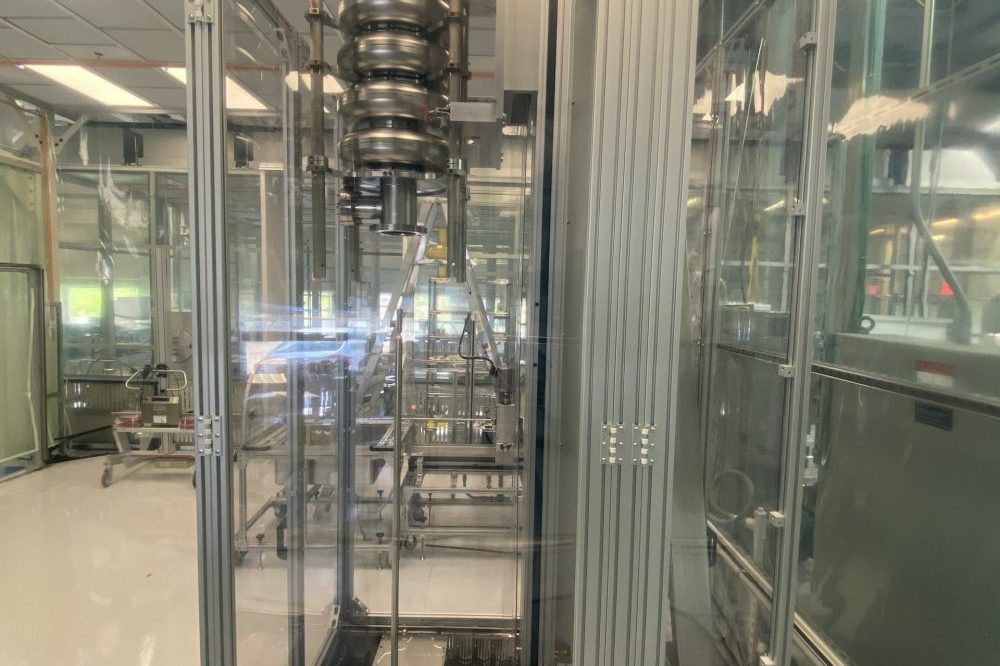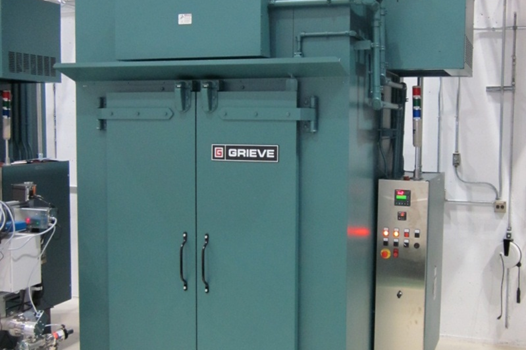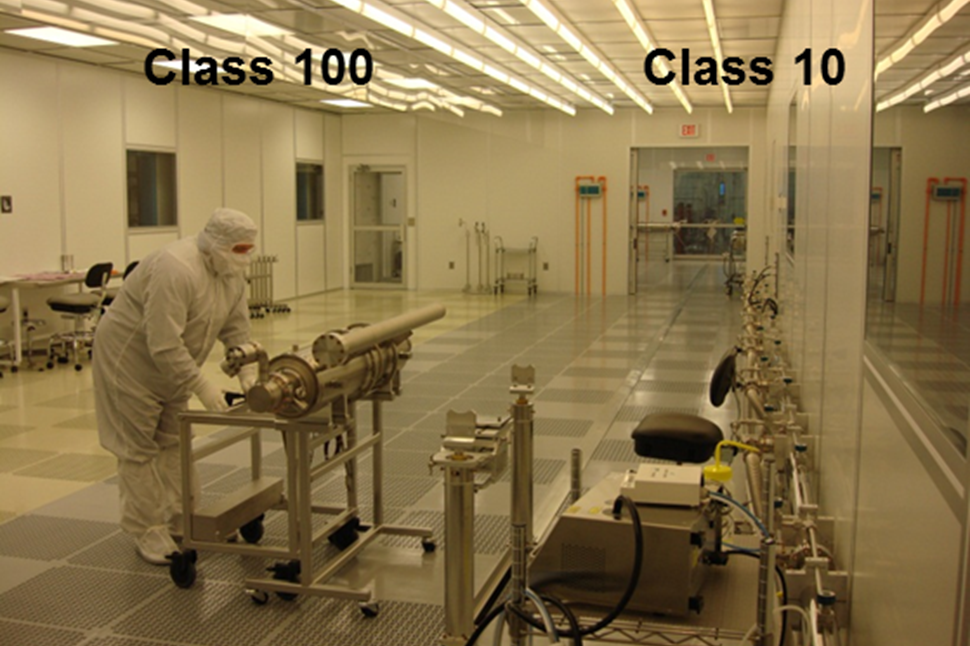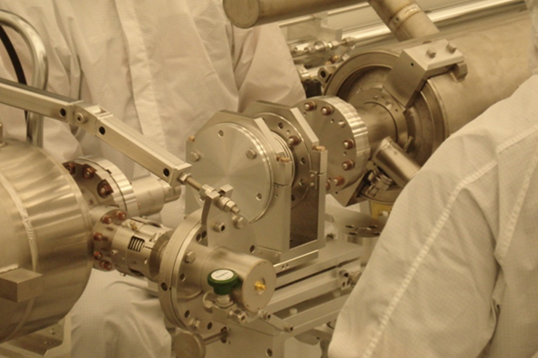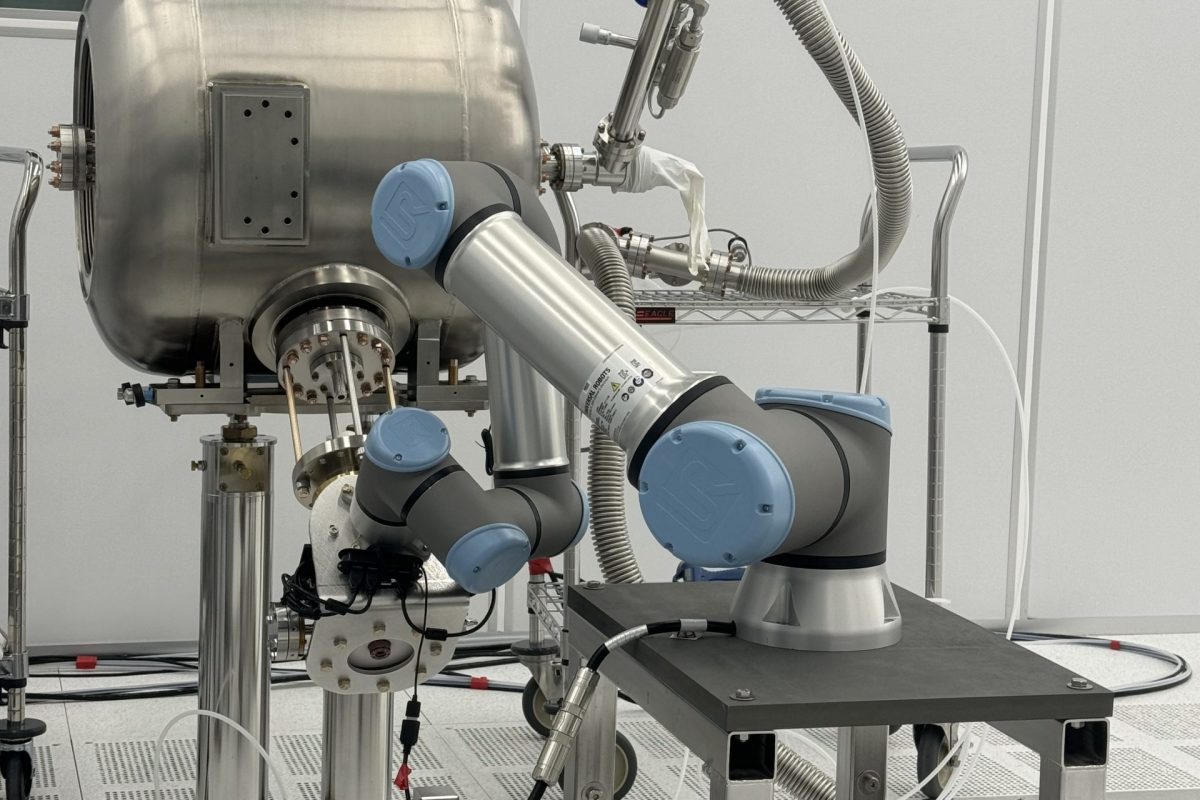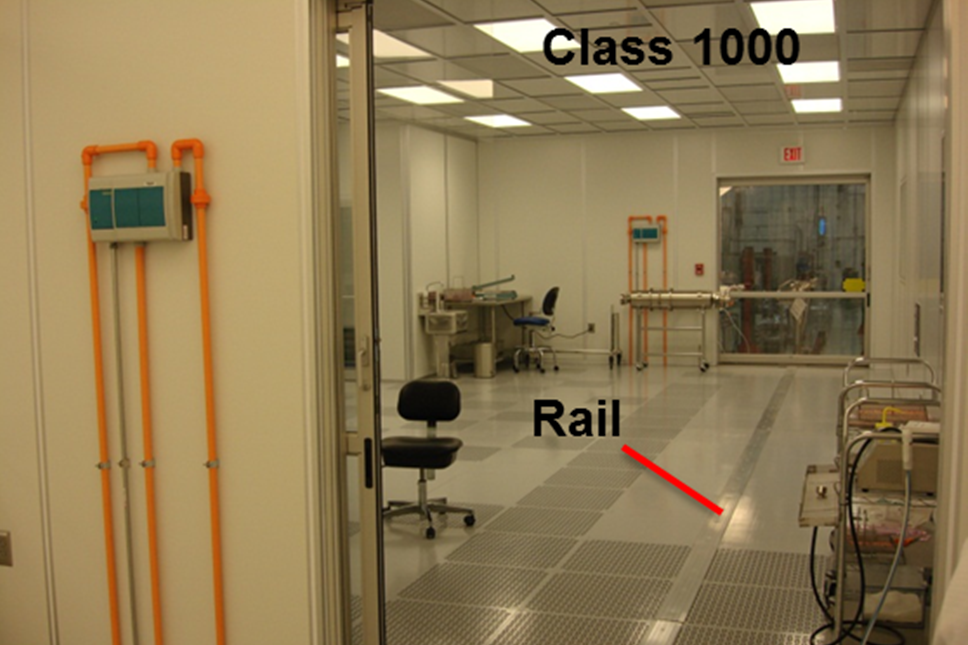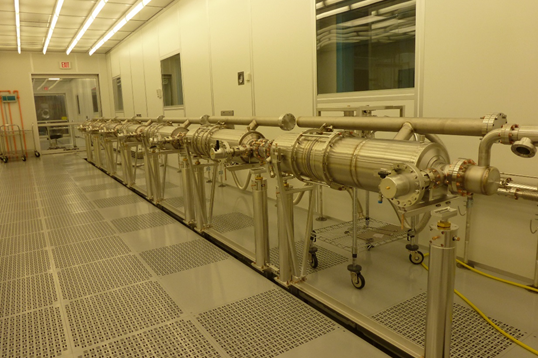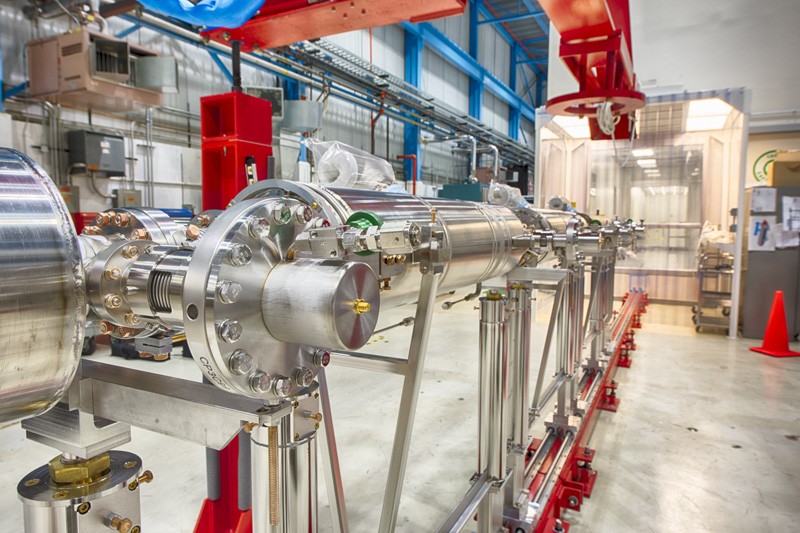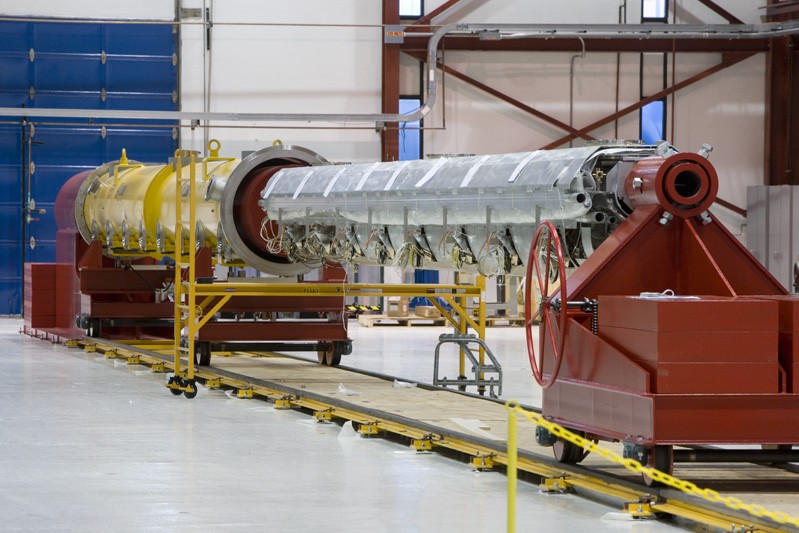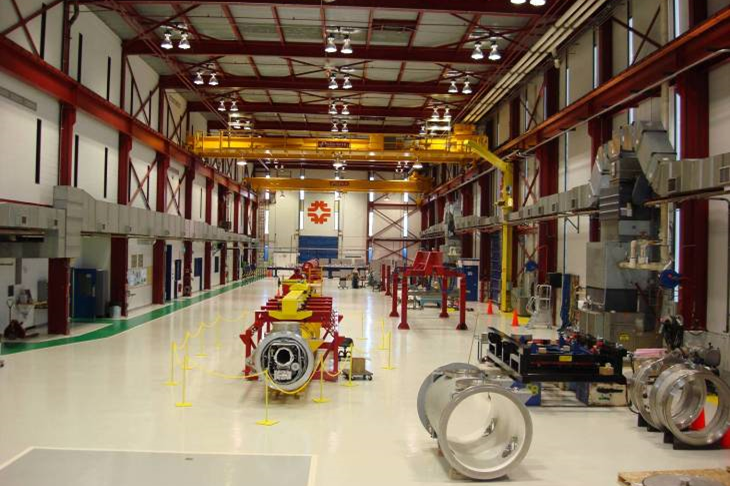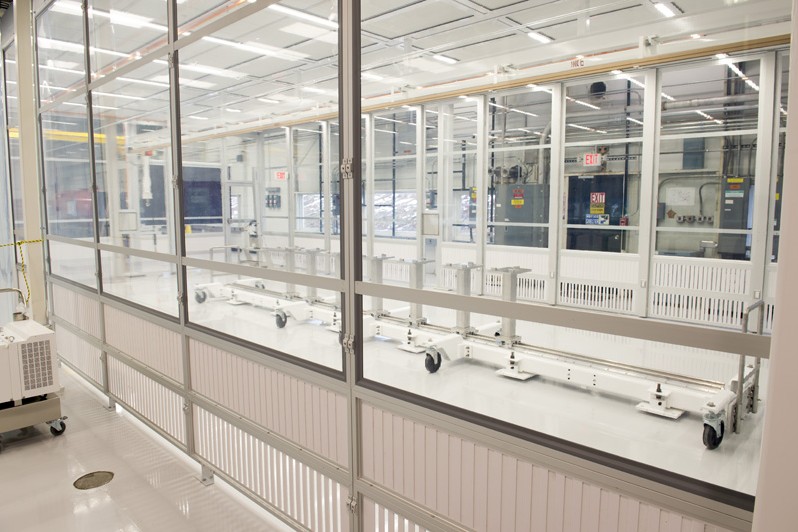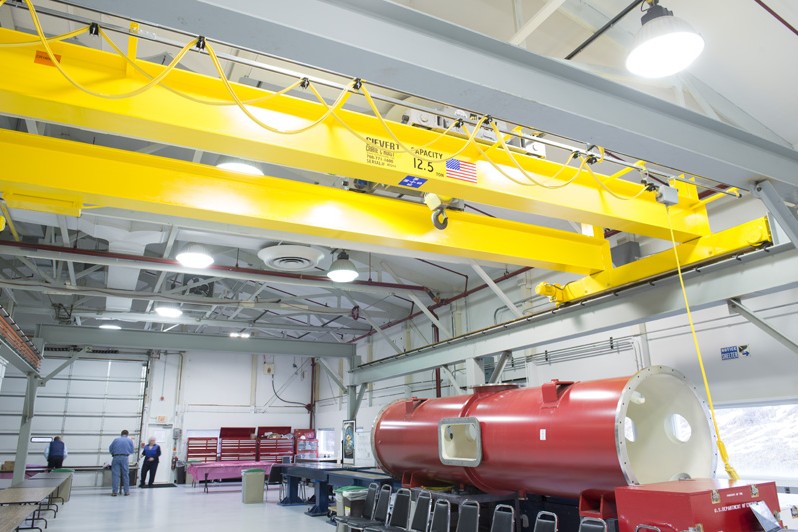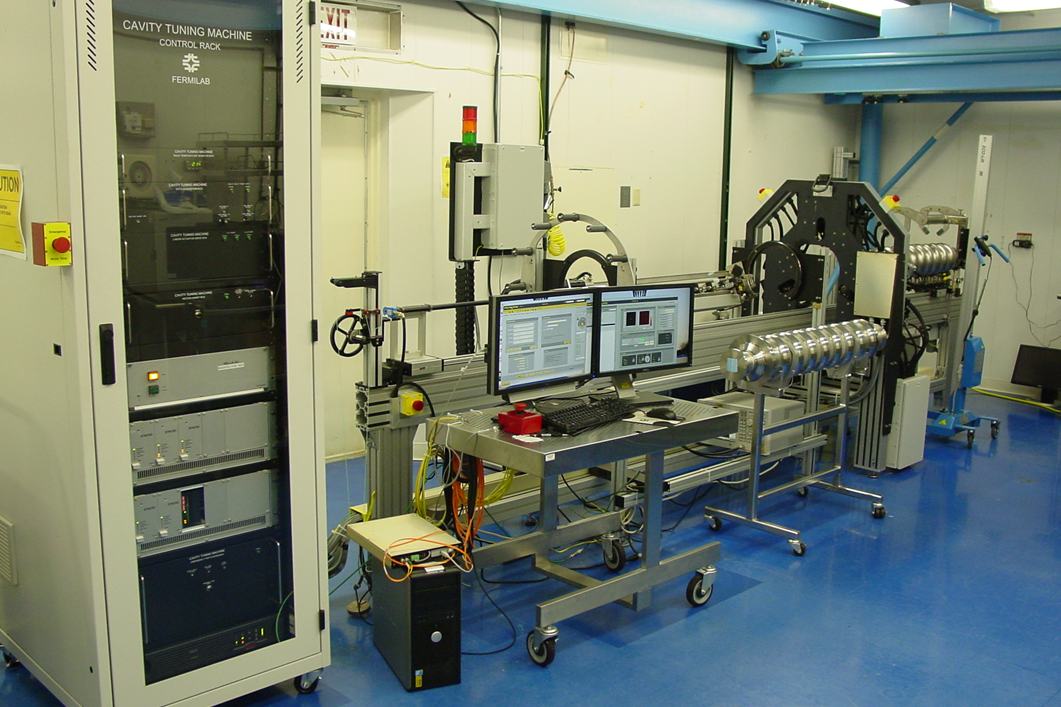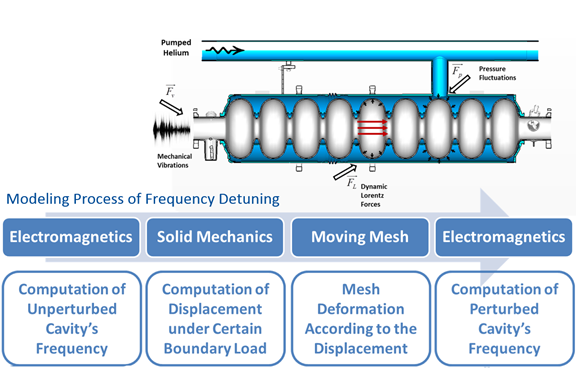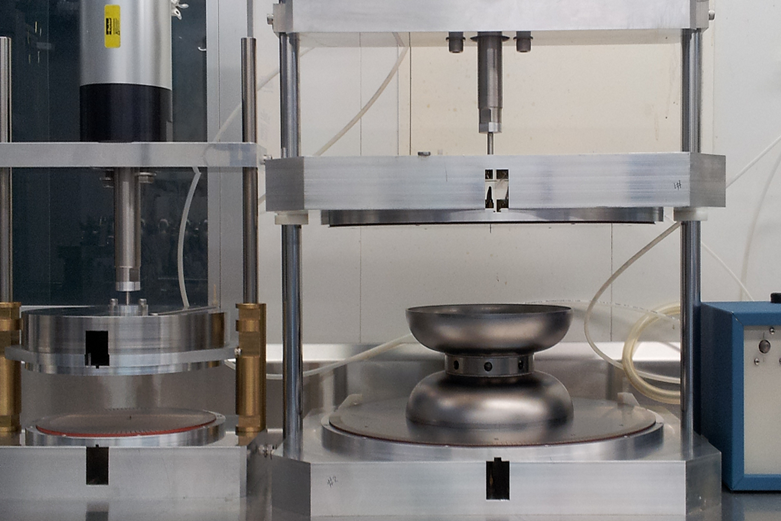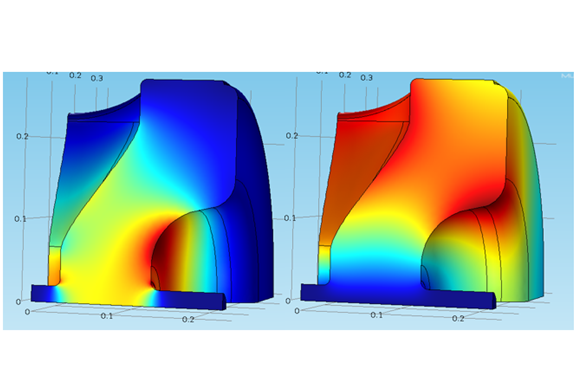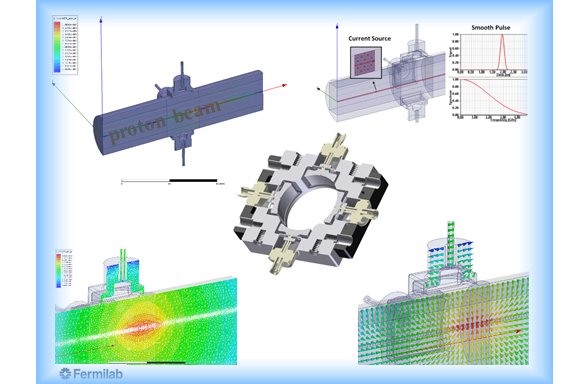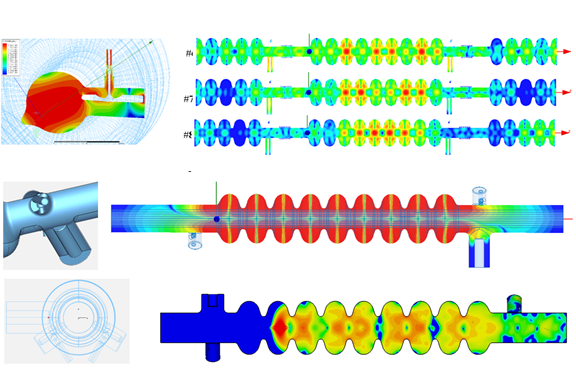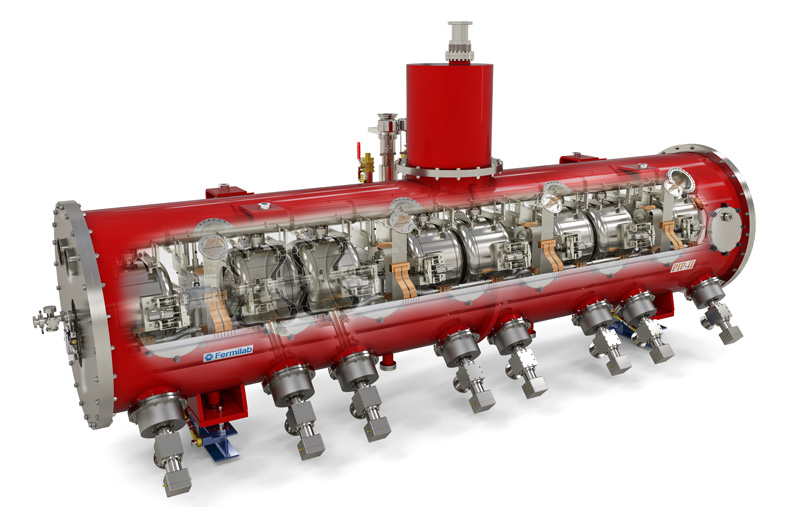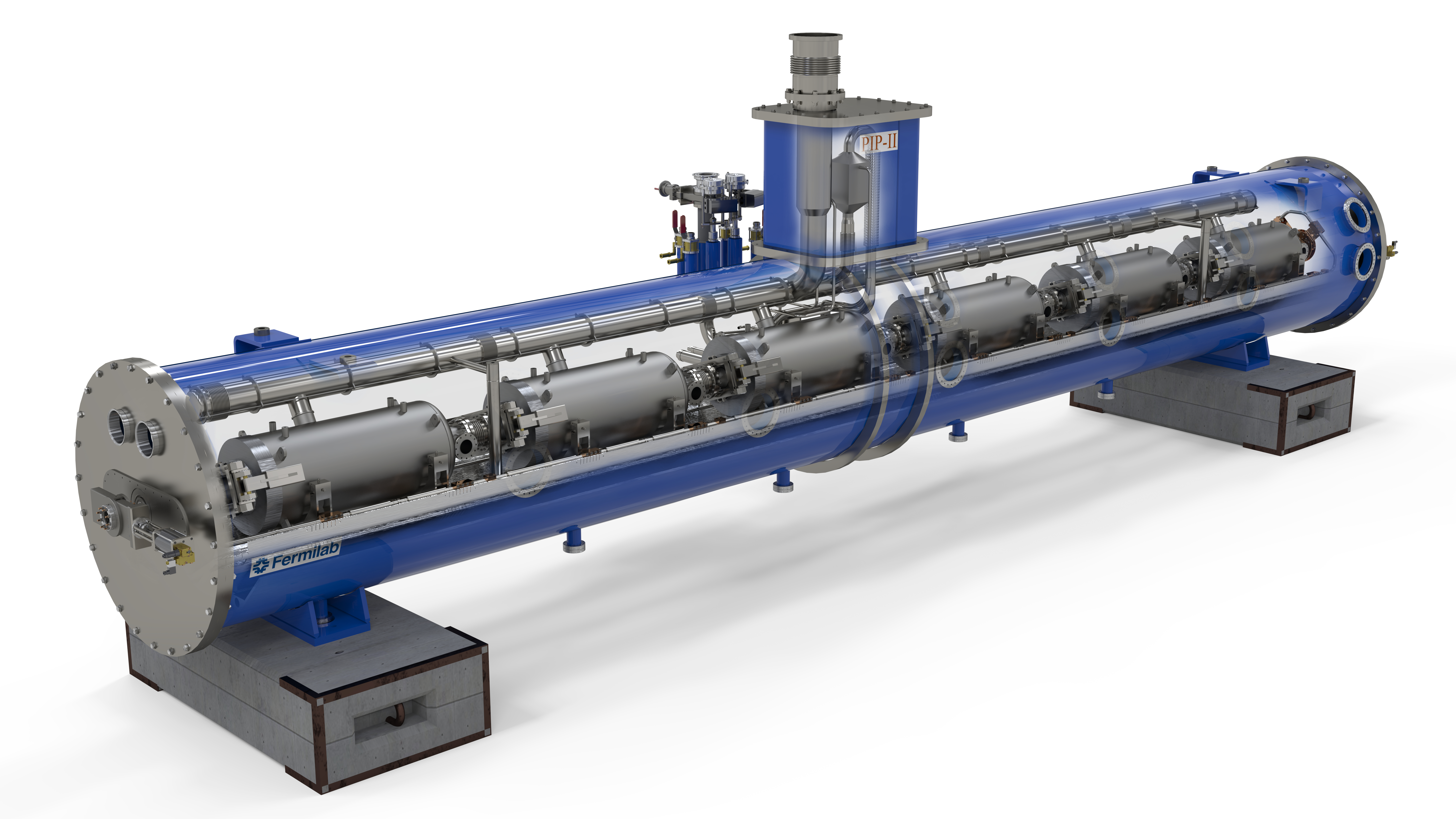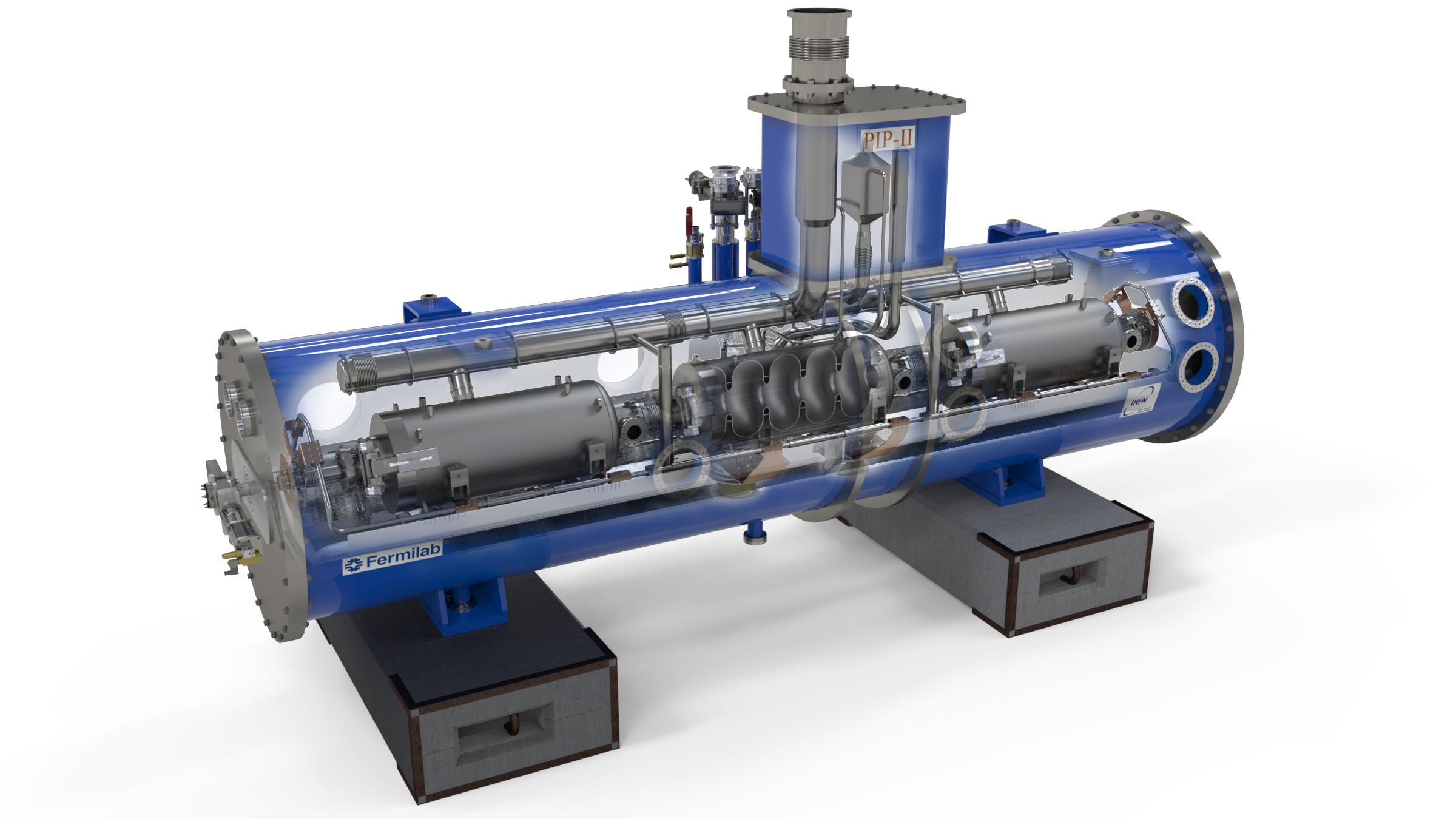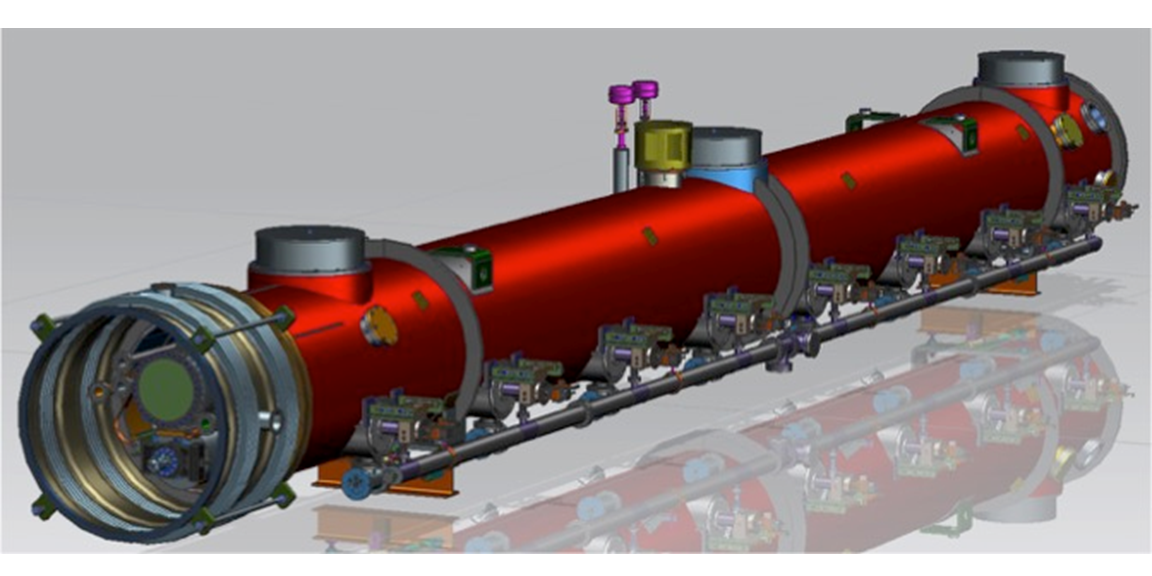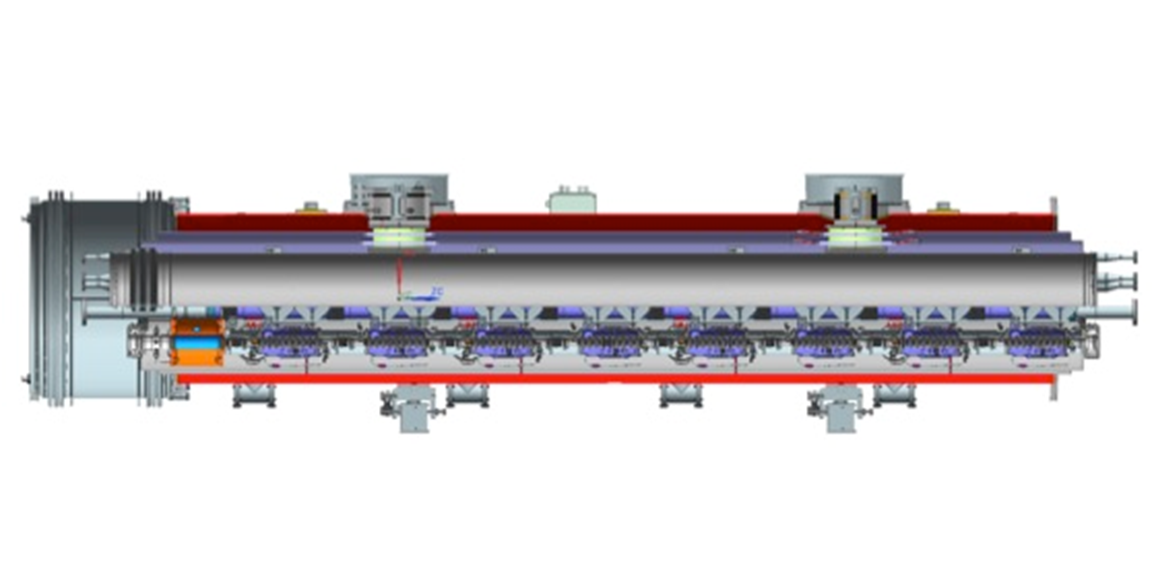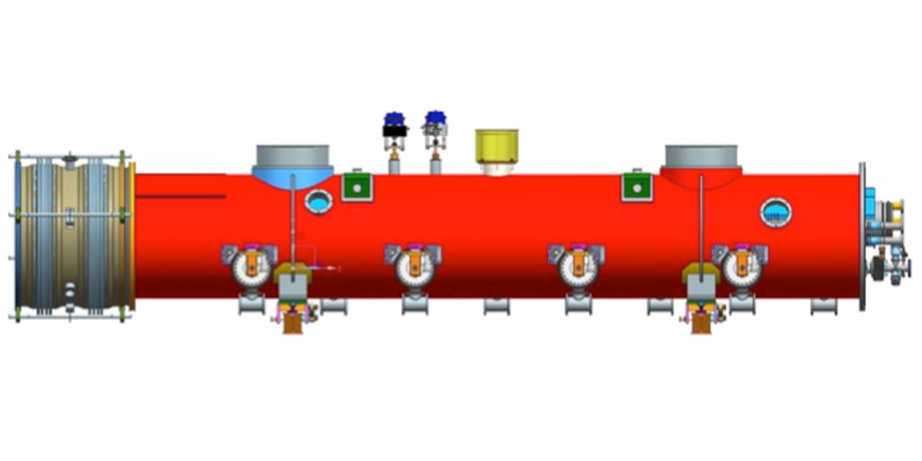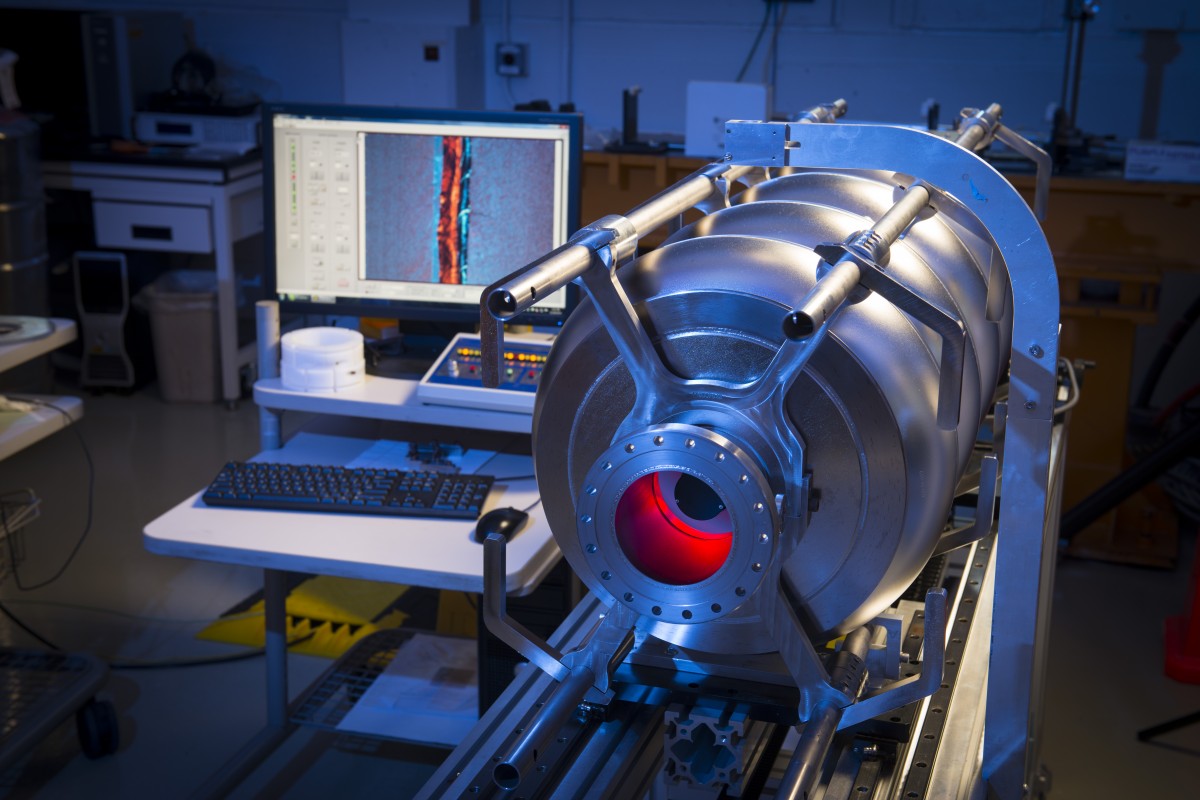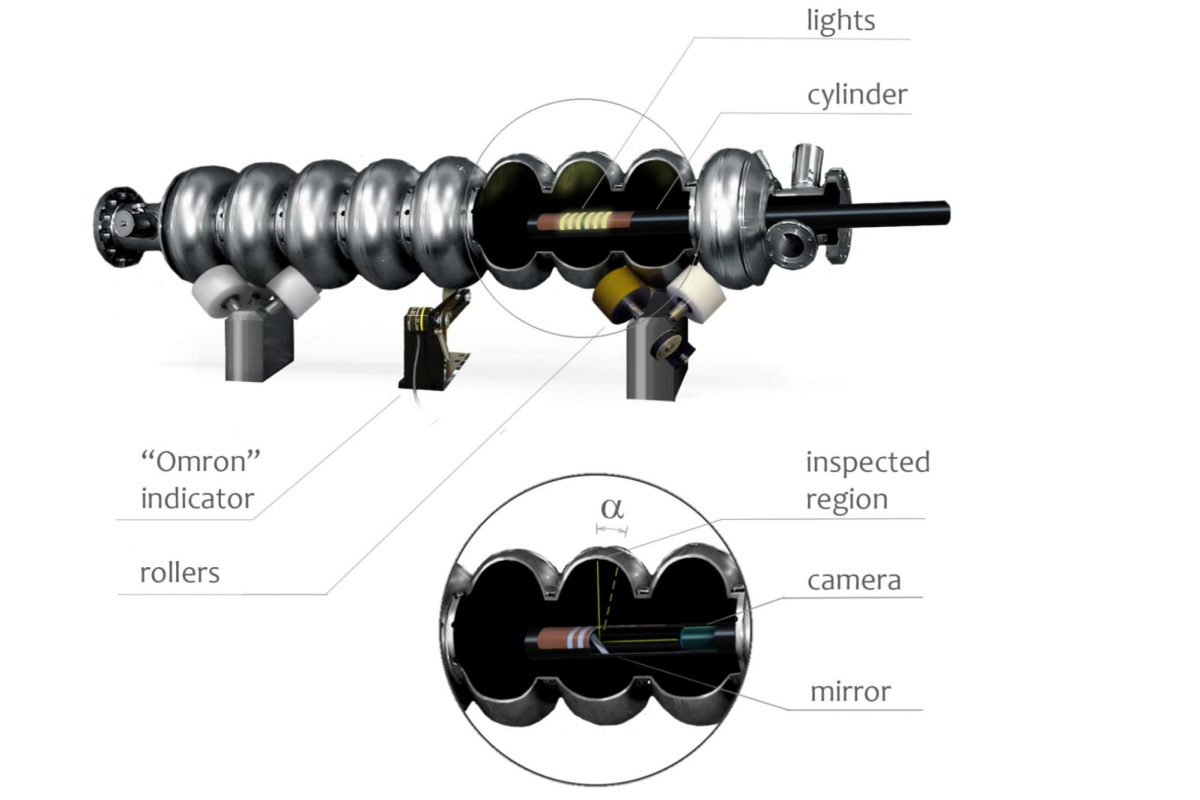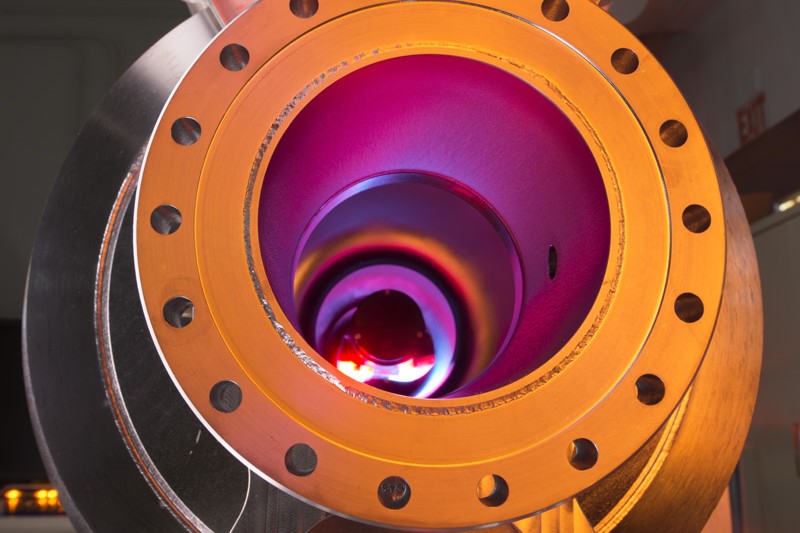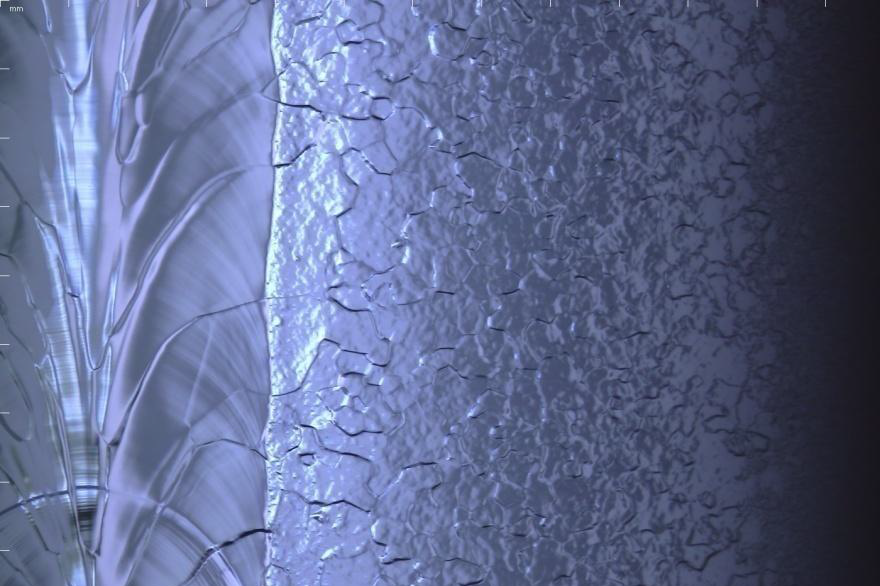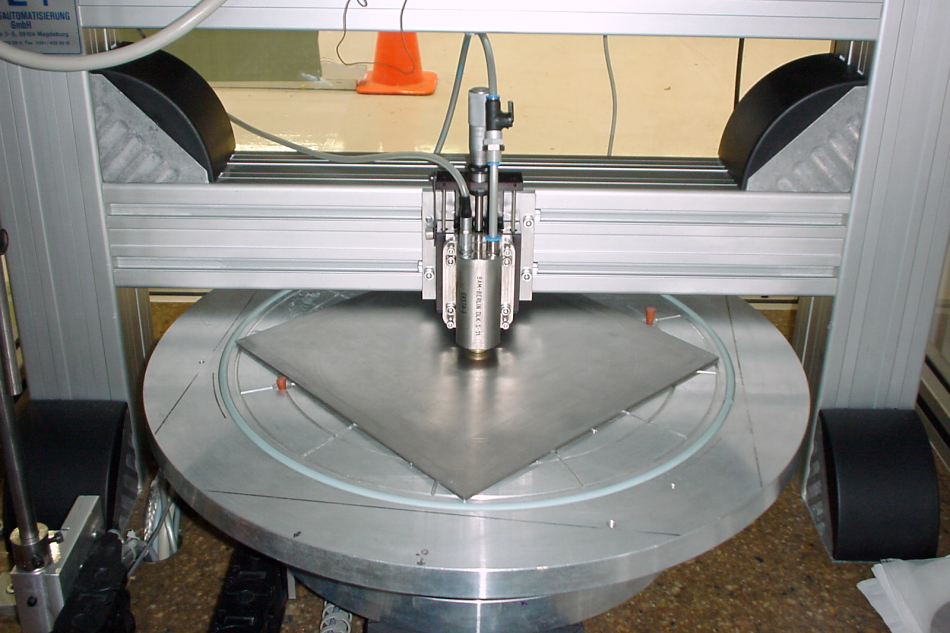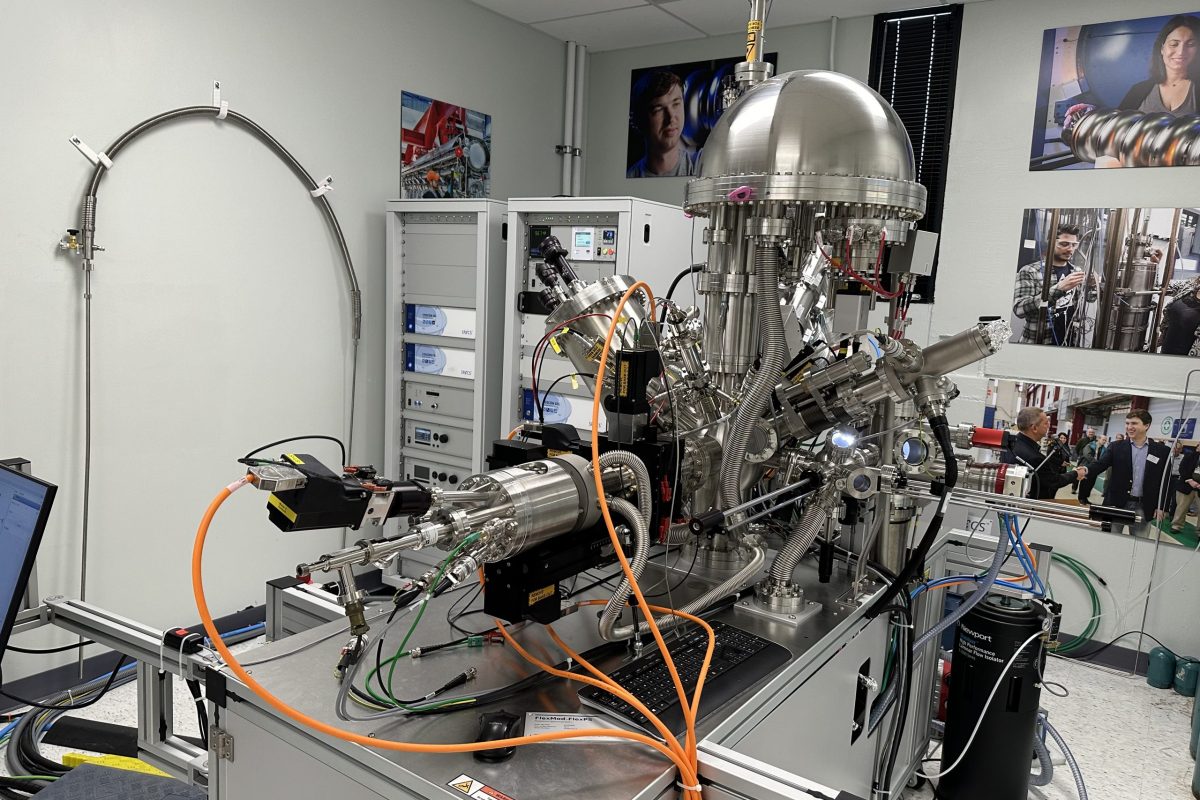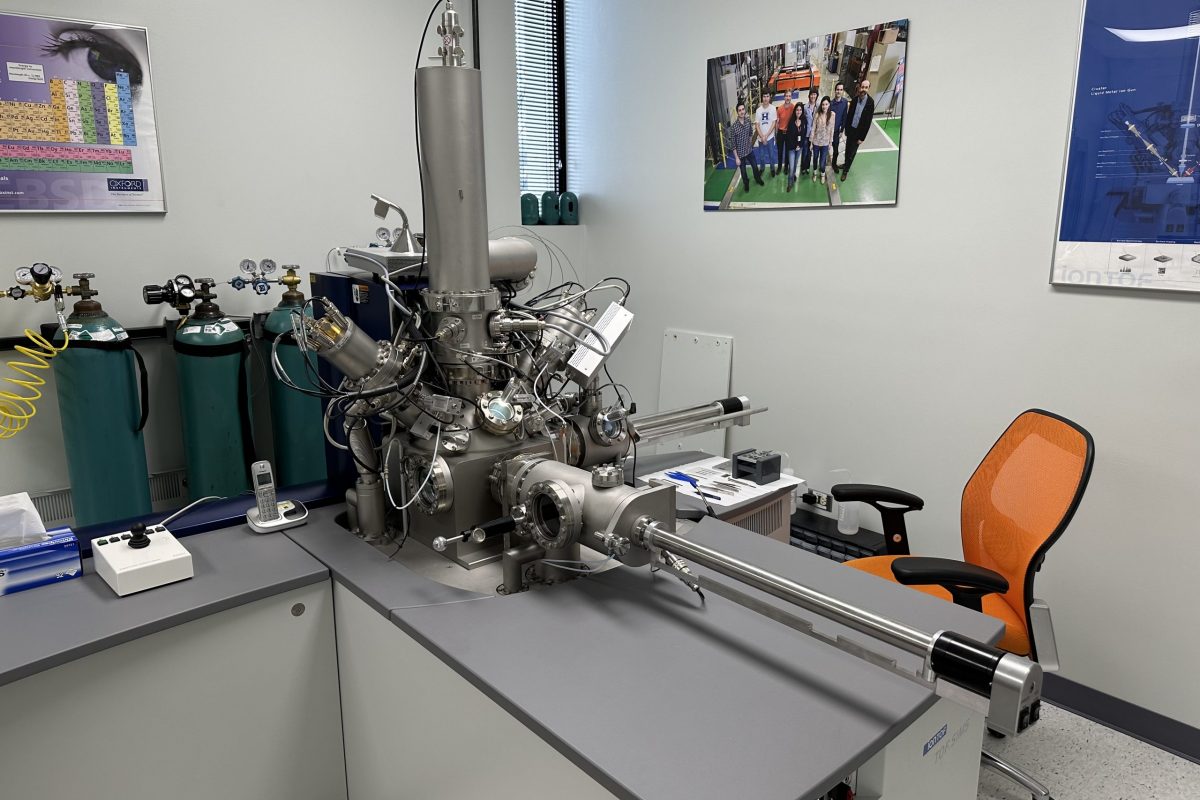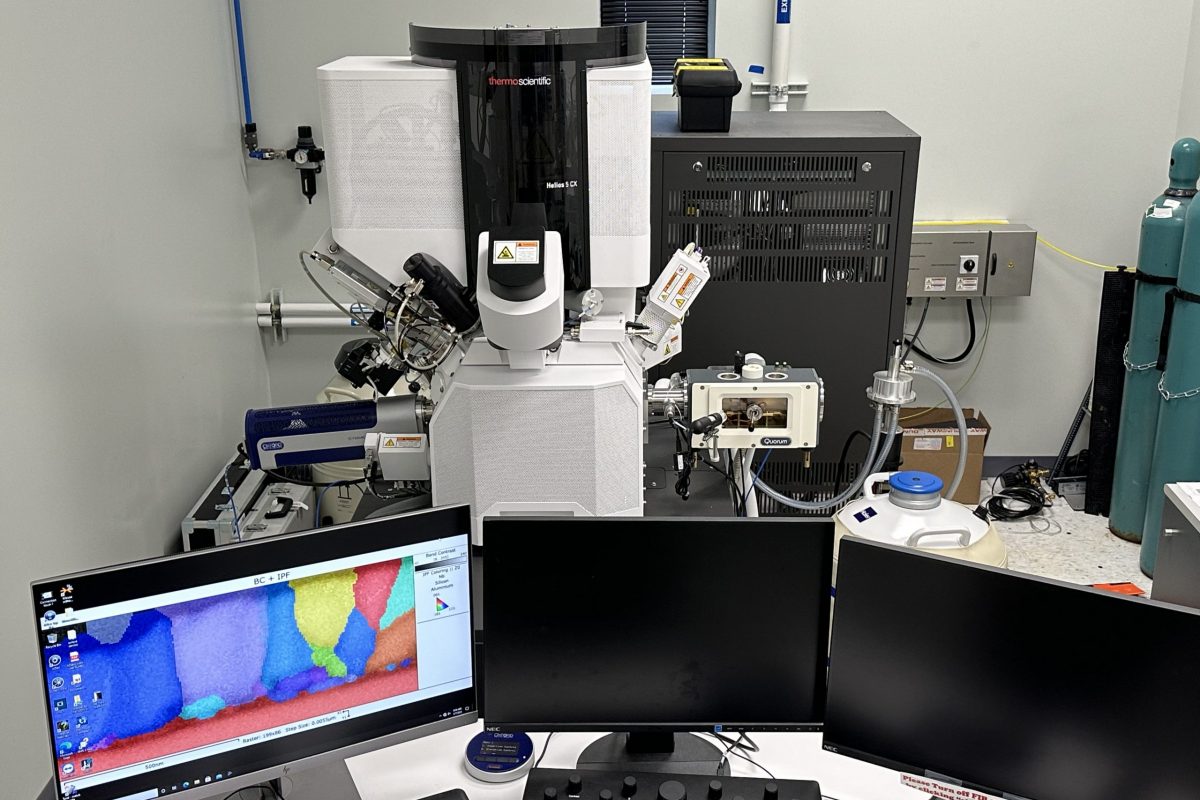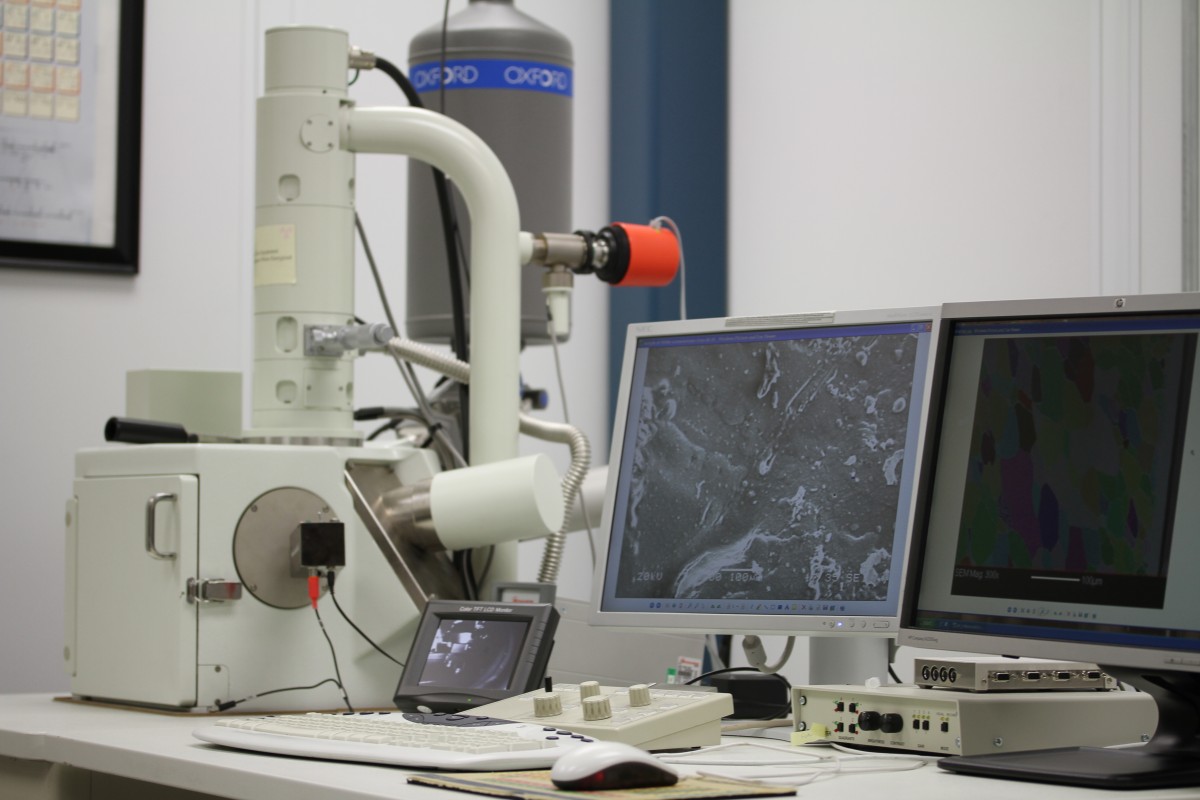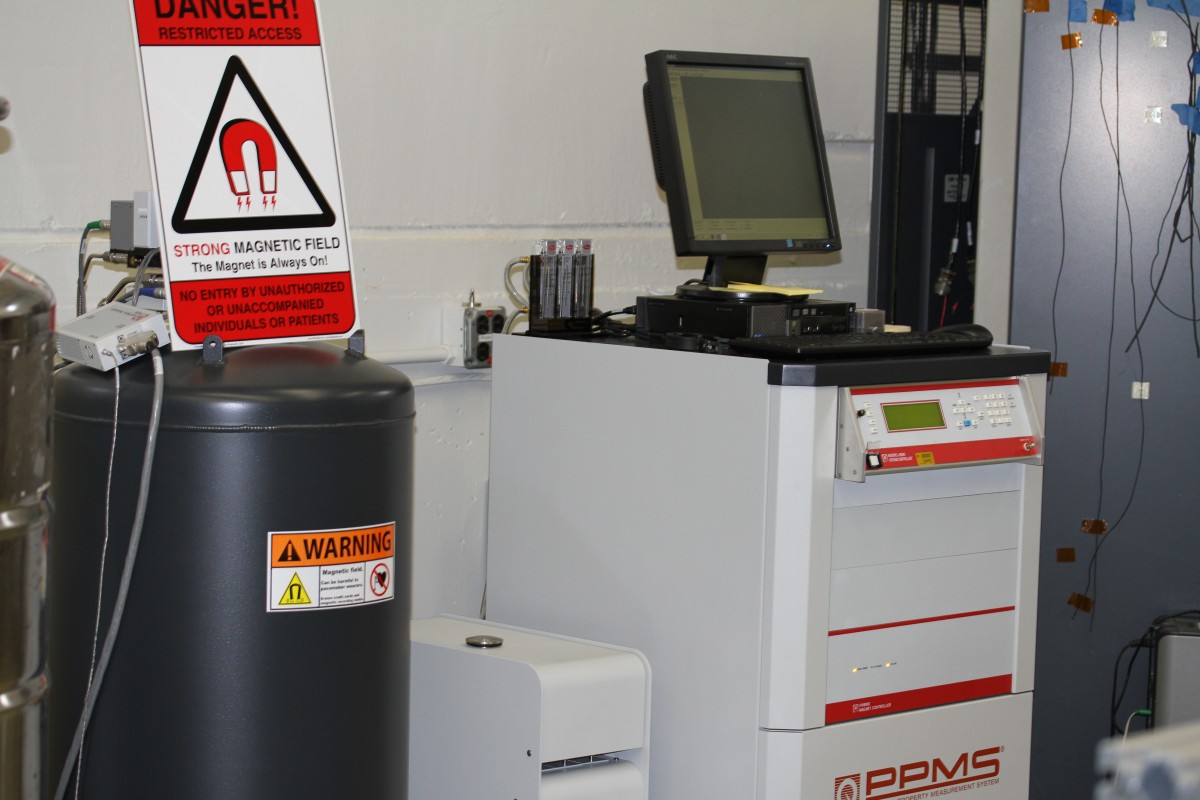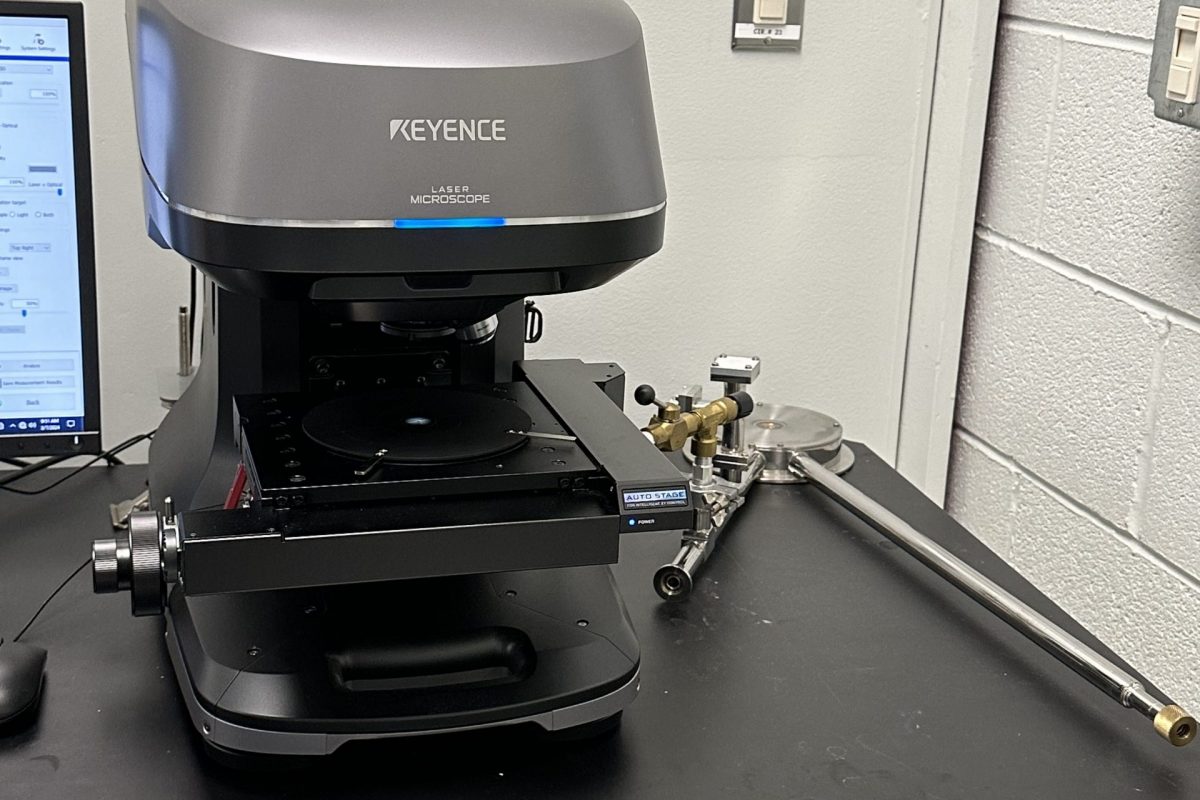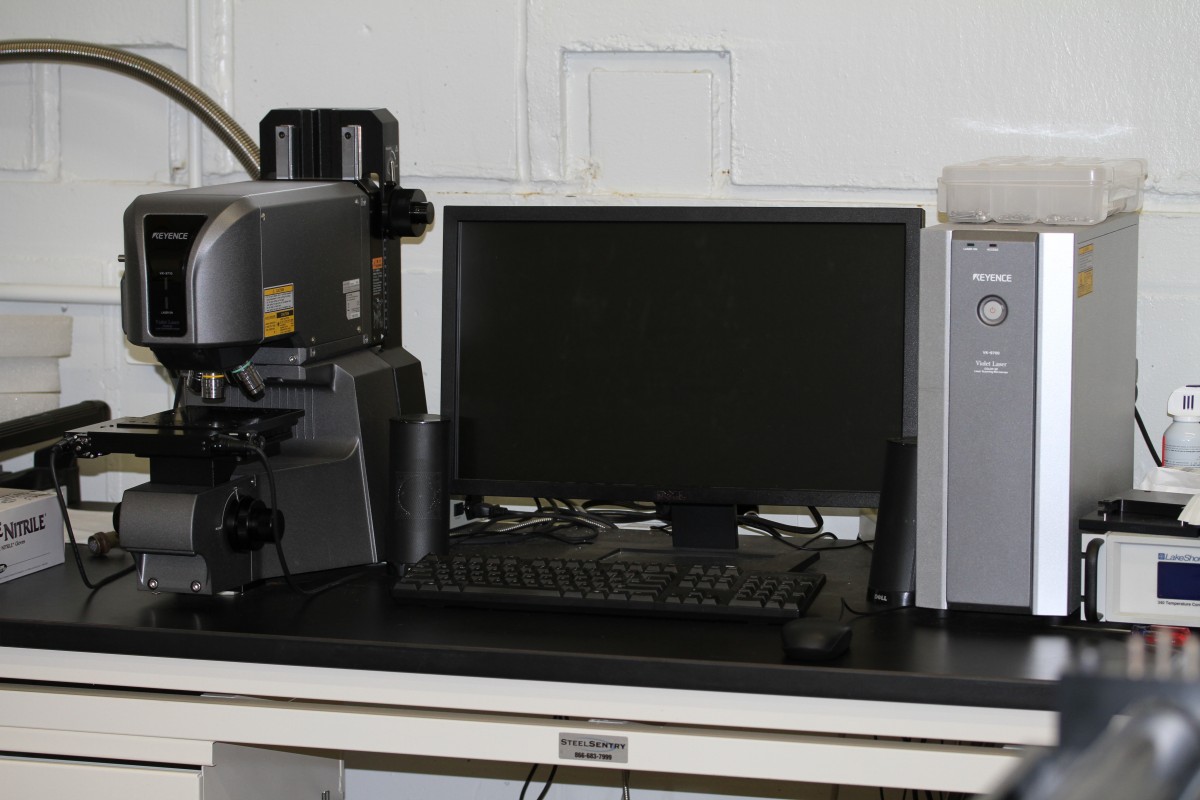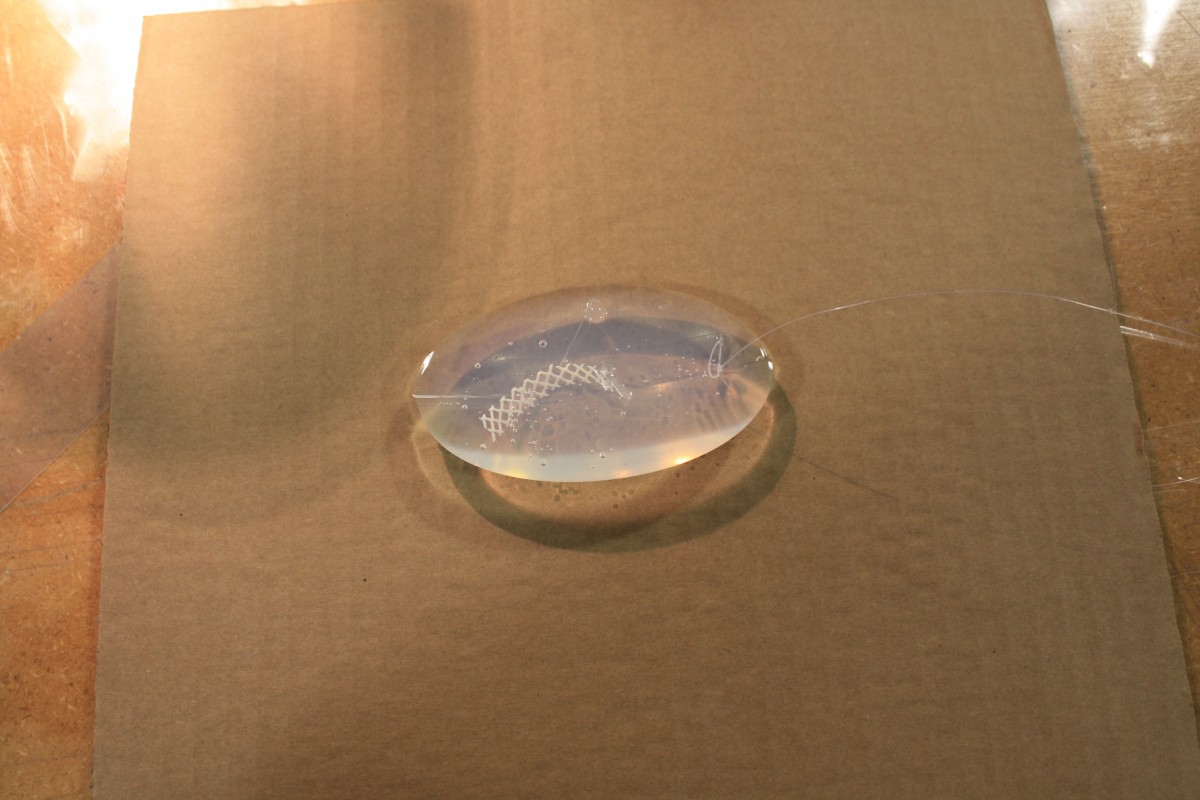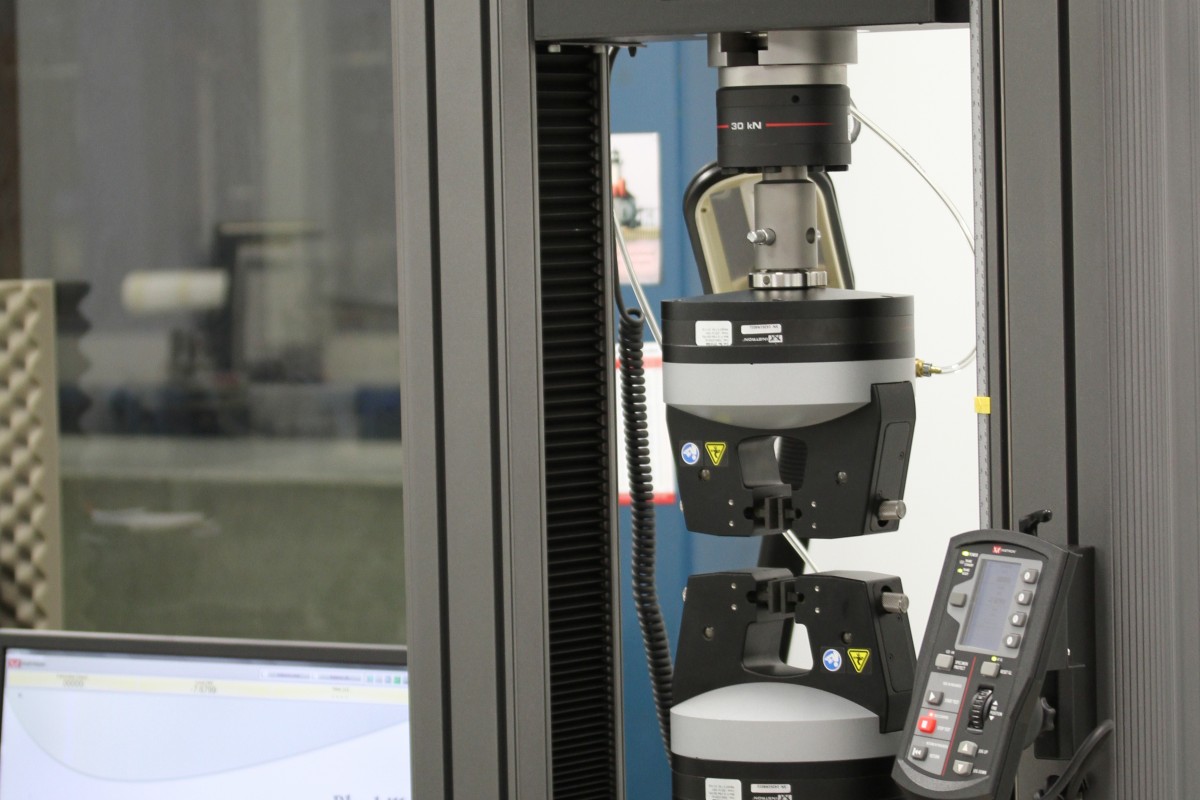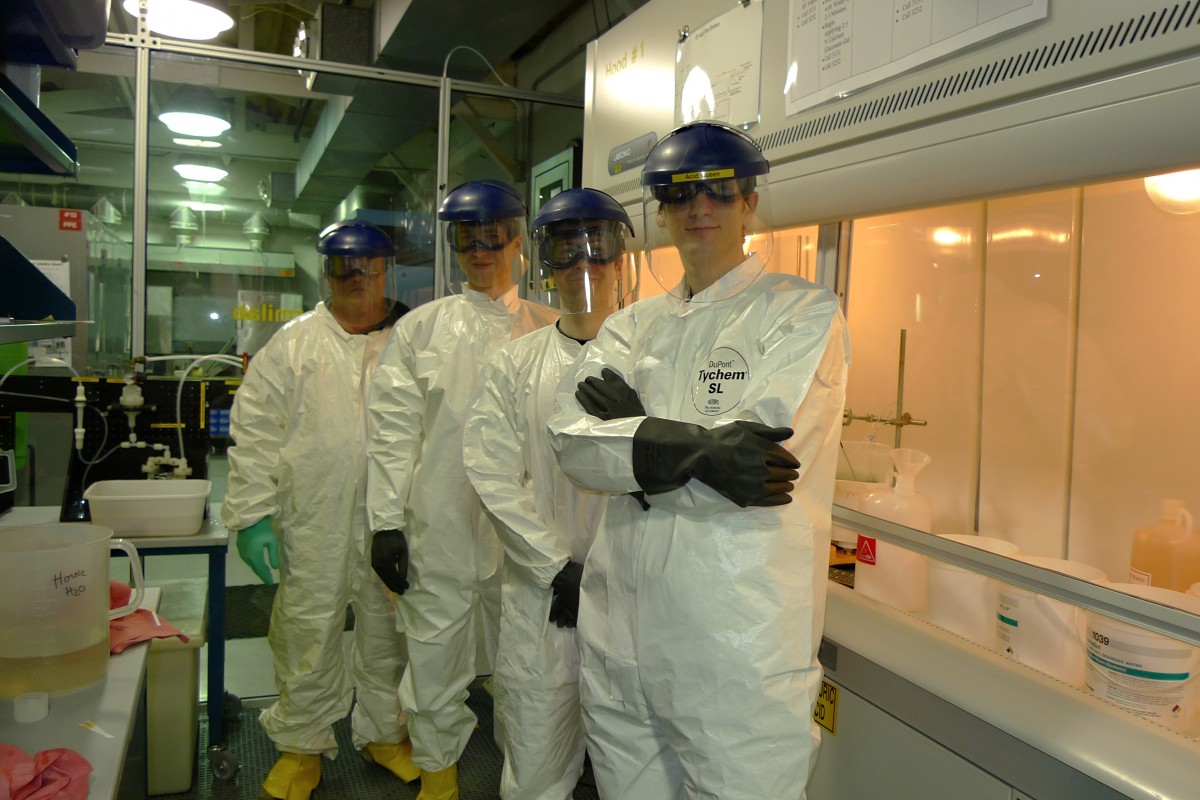To run its leading scientific research program in superconducting RF and state-of-the-art cryomodule production activities, the Applied Physics and Superconducting Technology Directorate (APS-TD) maintains comprehensive SRF capabilities that include full life-cycle treatment of cavities and cryomodules, from design through to production. The world-class facilities and wide spectrum of expertise are described in the following sections:
- Vertical Testing of Cavities
- Horizontal Testing of Cavities
- Cavity Surface Processing
- Cavity Post-Processing
- Cavity String and Cryomodule Assembly
- RF Design and Test
- Cryomodule Engineering
- Optical Inspection and Eddy Current Scanning
- Material Studies
Vertical Testing of Cavities
Fermilab’s SRF Vertical Test Stand Facility encompasses three large liquid helium dewars, each of which can test multiple production-style cavities simultaneously. The RF control system is capable of high power operation over a wide frequency range, and the cryogenic system can cool liquid helium baths as low as 1.4 K. Advanced diagnostic equipment includes second sound quench detection system, temperature mapping system for single cell cavities, and externally controlled magnetic field environment.
Horizontal Testing of Cavities
After a cavity treatment has been qualified in vertical test, it may then be evaluated in the Horizontal Test Facility (HTF), to make sure that it works well with all auxiliary components to achieve the required performance. In preparation for hoizontal test, the cavity is equipped with additional components such as tuners which maintain the cavity at the desired operating frequency, high power couplers that are used to power the cavity, and other ancillary systems that are needed to ensure the cavity will perform well in the accelerator. Fermilab has established three test stands at the HTF designed to test different types of accelerating cavities.
Cavity Surface Processing
High quality polishing is essential to deliver maximum accelerating gradients and high quality factors in SRF cavities. Chemical processing of superconducting cavities is mainly used to remove contaminants from the Niobium surface. Fermilab capabilities include electropolishing (EP), buffered chemical polishing (BCP), and centrifugal barrel polishing (BCP) for a wide variety of cavity types. Surface processing facilities are located in the Cavity Processing Lab in IB4 and the joint cavity surface processing facility at Argonne National Laboratory.
Cavity Post-Processing
Heat Treatment Facilities
Two high temperature vacuum furnaces and two low temperature ovens are used to perform heat treatments on SRF cavities. A major focus is to develop and optimize recipes and create new Niobium (Nb) compounds aimed at reducing RF losses in the cavities which can dramatically reduce operating costs. Other important applications of heat treatment are hydrogen degasification, annealing, and mild baking to remove high field Q-slope.
Class 100 Clean Rooms
SRF cavity cleanroom assembly capability is essential to good cavity performance. Fermilab clean rooms contain automated high-pressure rinsing tools used for cleaning the interior surface of cavities. They are also used to assemble cavities and pump them down to ultra high vacuum. Cleanroom facilites are located in IB4, Lab 2, and the joint cavity surface processing facility at Argonne National Laboratory.
Cavity String and Cryomodule Assembly
APS-TD has two independent cavity string assembly facilities, located in MP9 (the largest cleanroom at Fermilab, ~250 m2) and Lab 2. Each contain cleanroom areas with several levels of cleanliness:
- Class 1000 (ISO6) ante cleanroom area: Preparation of the dressed cavities for transportation into the assembly cleanroom.
- Class 100 (ISO5) sluice area: Parts and Fixtures final preparation to enter the Class 10 assembly area.
- Class 10 (ISO4) assembly cleanroom area: Where the cavity vacuum is vented to interconnect them with bellows.
Production floor areas for cryomodule assembly are located in ICB and Lab 2.
RF Design and Test
The central part of any particle accelerator is accelerating structure or RF cavity. Successful operation of cavities requires optimized design, precise production, and low power RF tuning. We have tools for providing superior design, precise measurements and tuning of accelerating cavities both for prototyping and production. The simulations codes HFSS, COMSOL, CST and ANSYS are installed in specialized TD servers to allow us to increase design efficiency, performing advanced analysis for optimized cavity design. Optimization includes reducing peak surface fields, multipactor mitigation, higher order modes extraction and damping, microphonics sensitivity, Lorentz force detuning minimization, structural and thermal stability analysis, and study of multipole effects of the beam.
Our sophisticated RF measurement equipment and tuning tools allow us to work with different type of RF cavities in wide frequency range. We are responsible of RF testing and quality control on all received cavities from vendors along the process of qualifying them for cryomodule operation. This includes monitoring key cavity performance parameters such as frequency spectrum, field flatness, eccentricity and physical length.
Cryomodule Engineering
Cryomodules are the vacuum-insulated assemblies of superconducting RF cavities and associated hardware, including instrumentation and often also a superconducting magnet package. Thus, a cryomodule is the fundamental building block of a superconducting RF accelerator. These complex assemblies provide numerous challenges to engineers and designers. The cryomodules provide support, precise alignment, and thermal and magnetic shielding for the dressed cavities, as well as feed-throughs from the outside environment to low temperatures for the RF power and instrumentation. The cryomodule must provide the required insulating and beam vacuum and provide robust support with minimal cavity vibration and good cavity alignment reliably with thermal cycling. The design provides for cooling of the RF cavities to superconducting temperatures and protects the helium and vacuum spaces including the RF cavity from exceeding allowable pressures. Design of cryomodules calls upon a wide range of mechanical, thermal, and electrical engineering skills and experience.
Optical Inspection & Eddy Current Scanning
The optical inspection system consists of a camera and lighting system mounted to a rod that is inserted into the cavity. It is used for routine inspection of cavities during the processing cycle as well as computer-aided close inspection of particular regions of interest. Eddy current scanning is used to examine niobium sheets prior to cavity fabrication to check for impurities.
Material Studies
A wide range of materials studies tools are used, including Time-of-Flight Secondary Ion Mass Spectrometry (ToF–SIMS), X-ray Photoelectron Spectroscopy, Ultraviolet Photoelectron Spectroscopy (UPS), Auger Electron Spectroscopy (AES), Scanning Electron Microscopy (SEM) with Energy-Dispersive X-ray Spectroscopy (EDS) and Electron Backscatter Diffraction (EBSD) capabilities, Focused Ion Beam (FIB), Physical Property Measurement System (PPMS), Instron tensile testing, Keyence Confocal Laser Scanning Microscopy (CLSM), and surface topological replicas. Chemical treatment of samples is also a critical capability.

